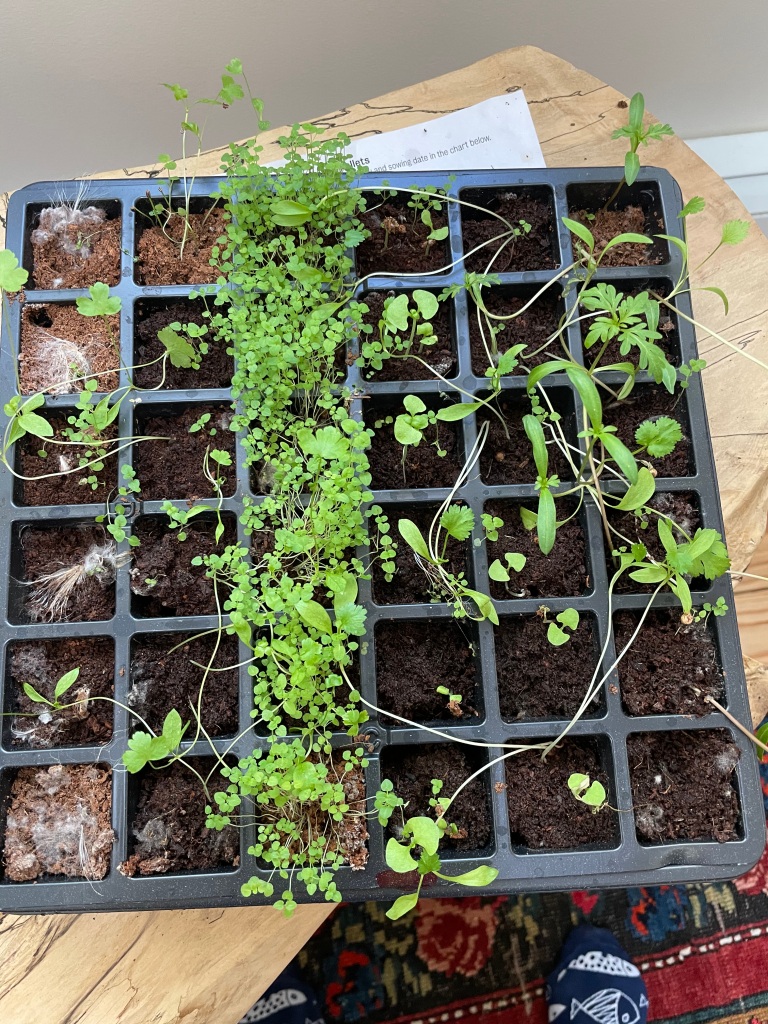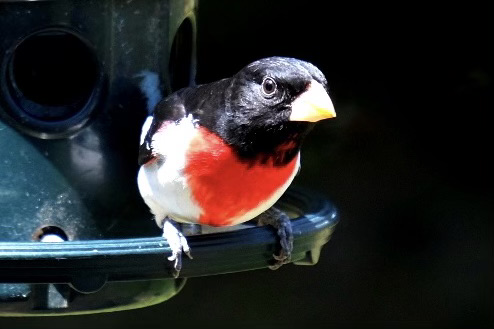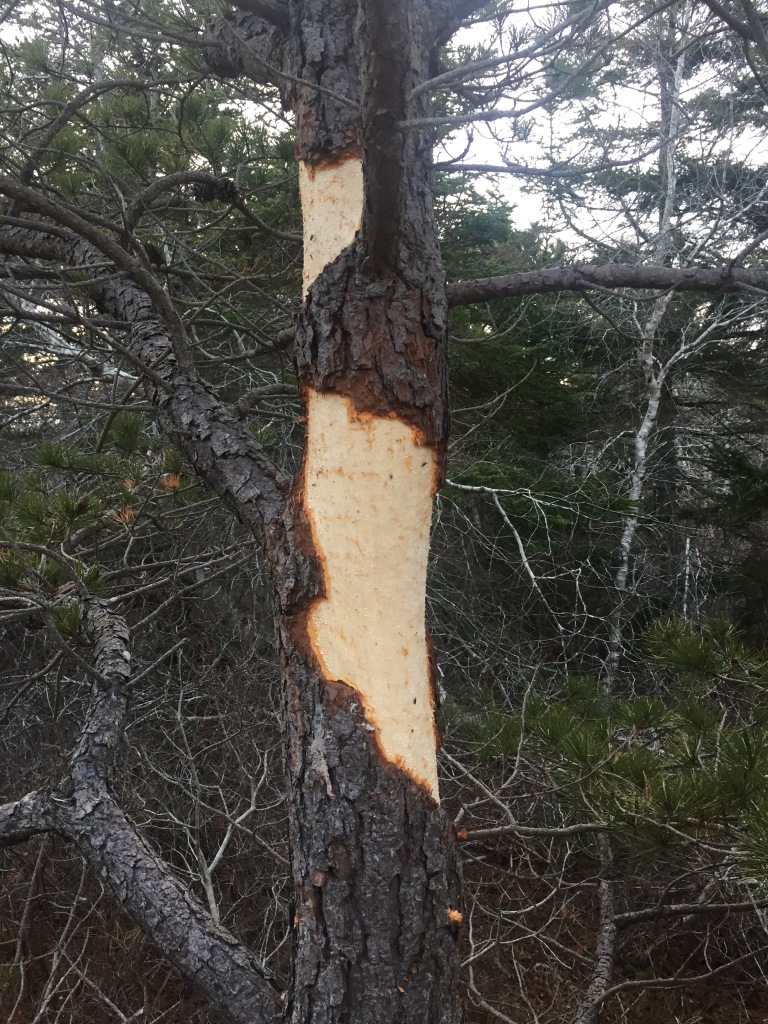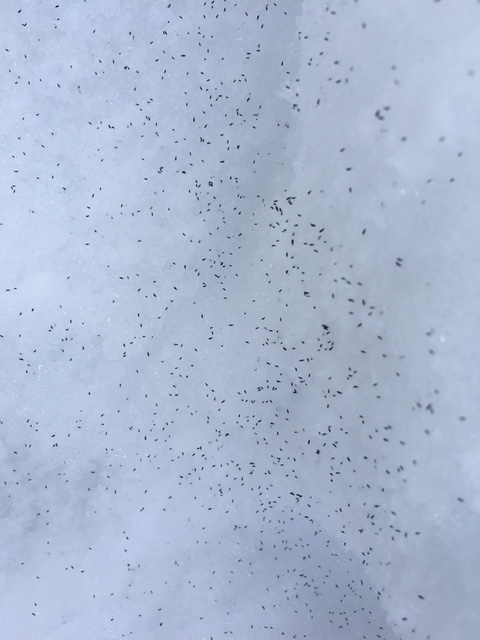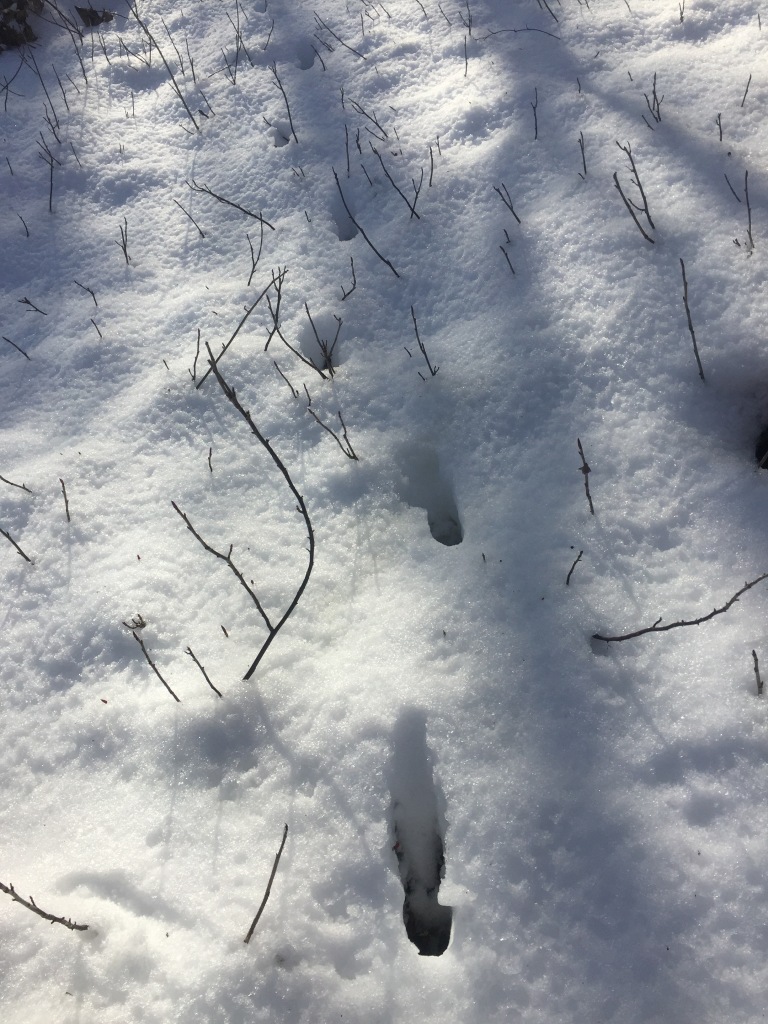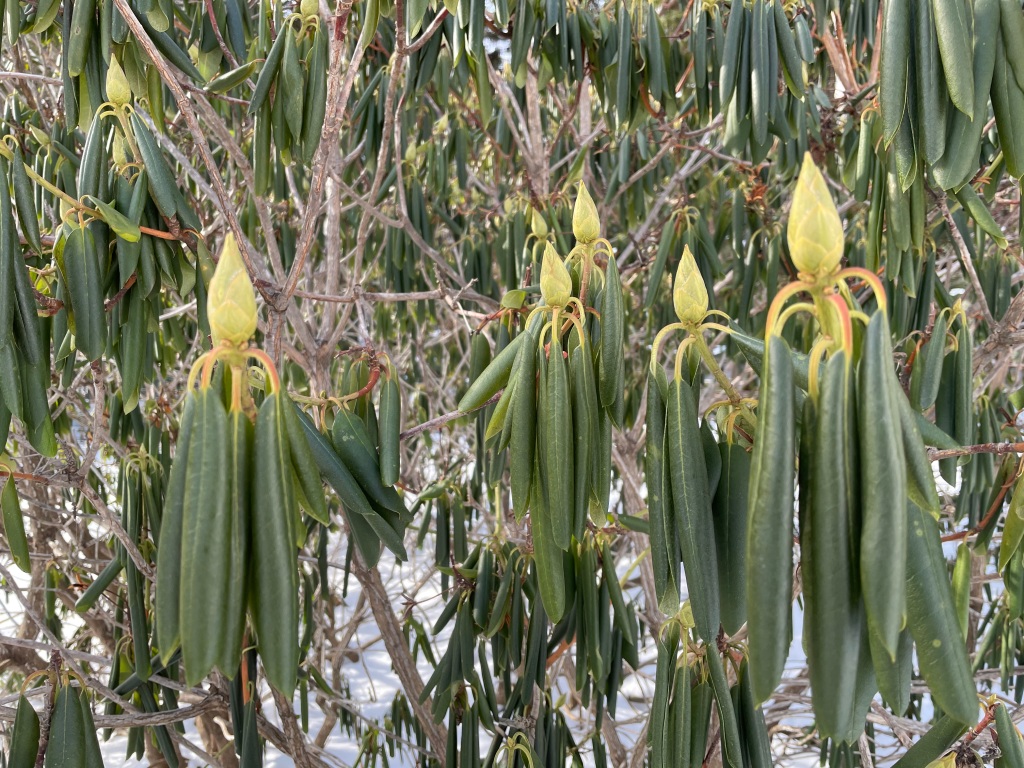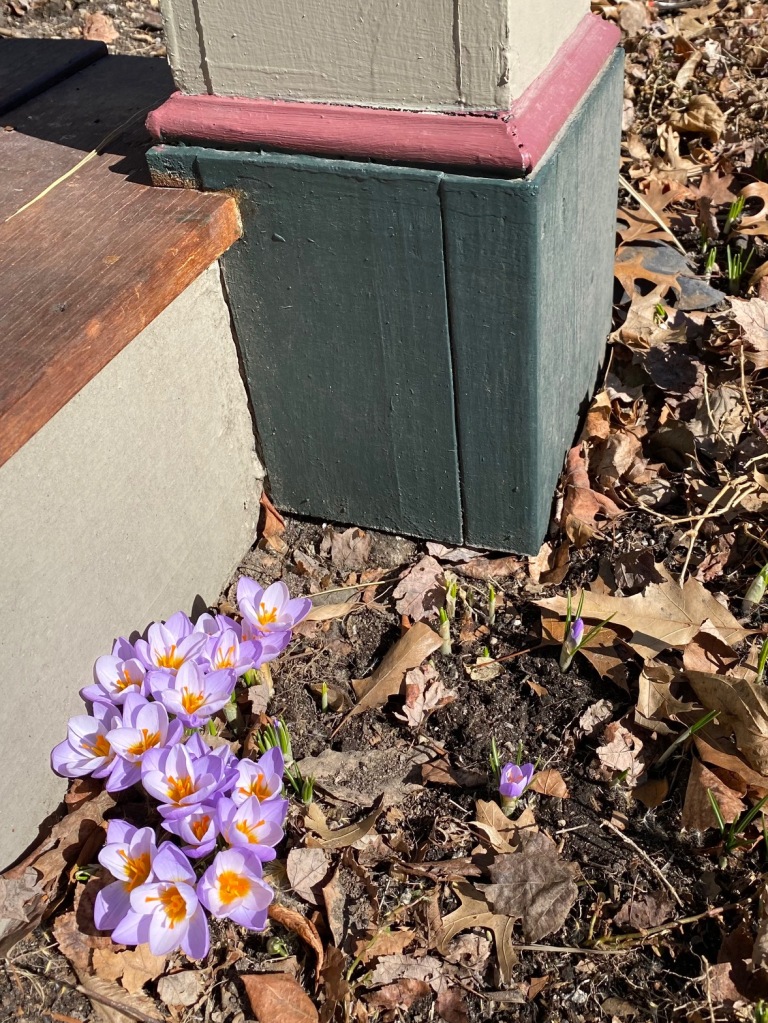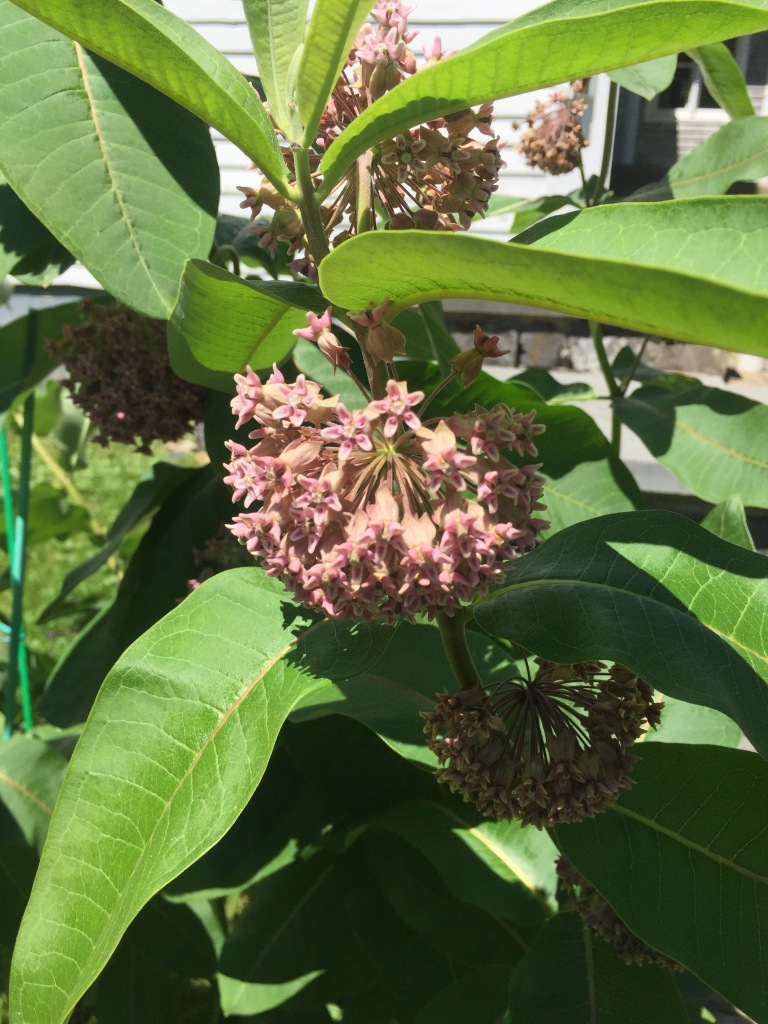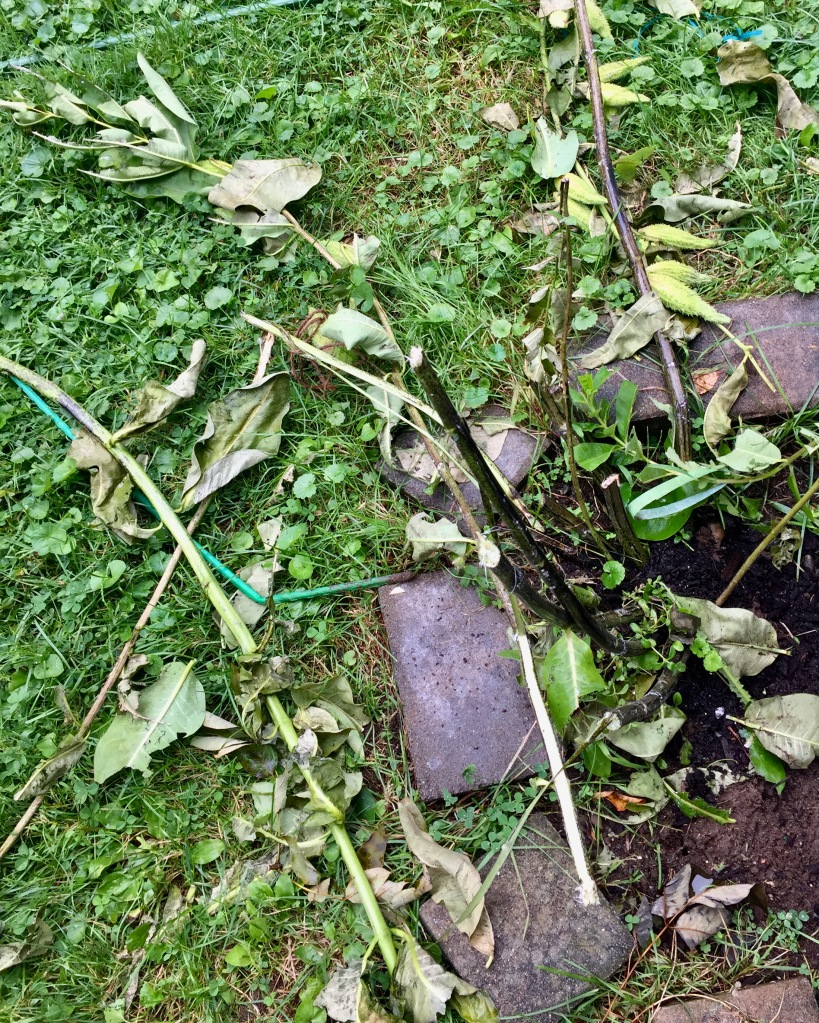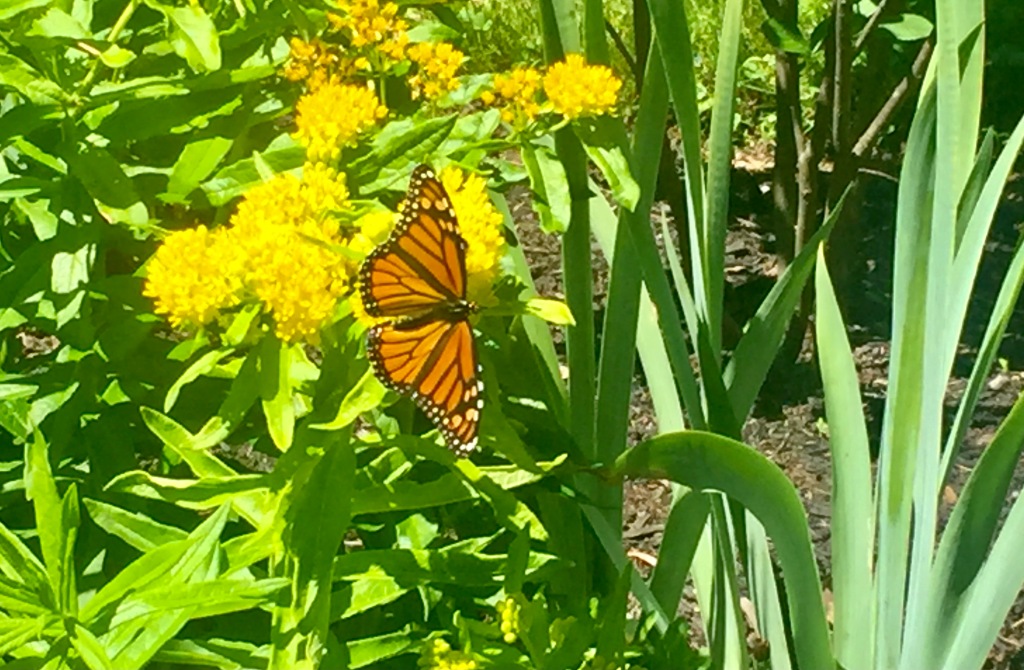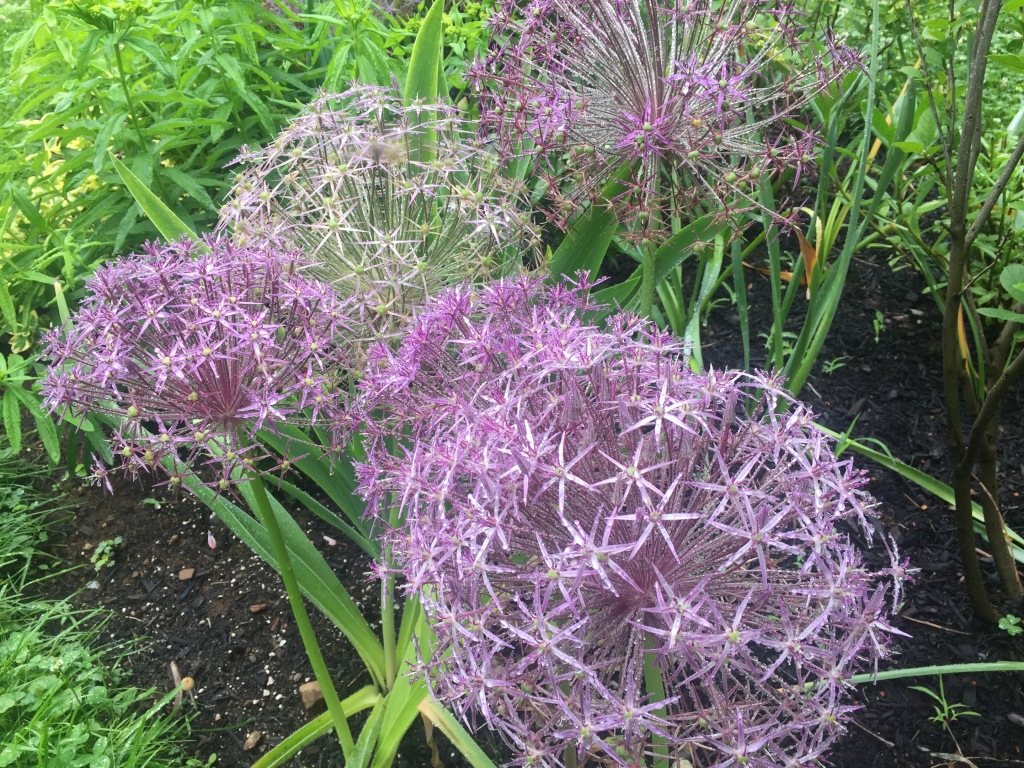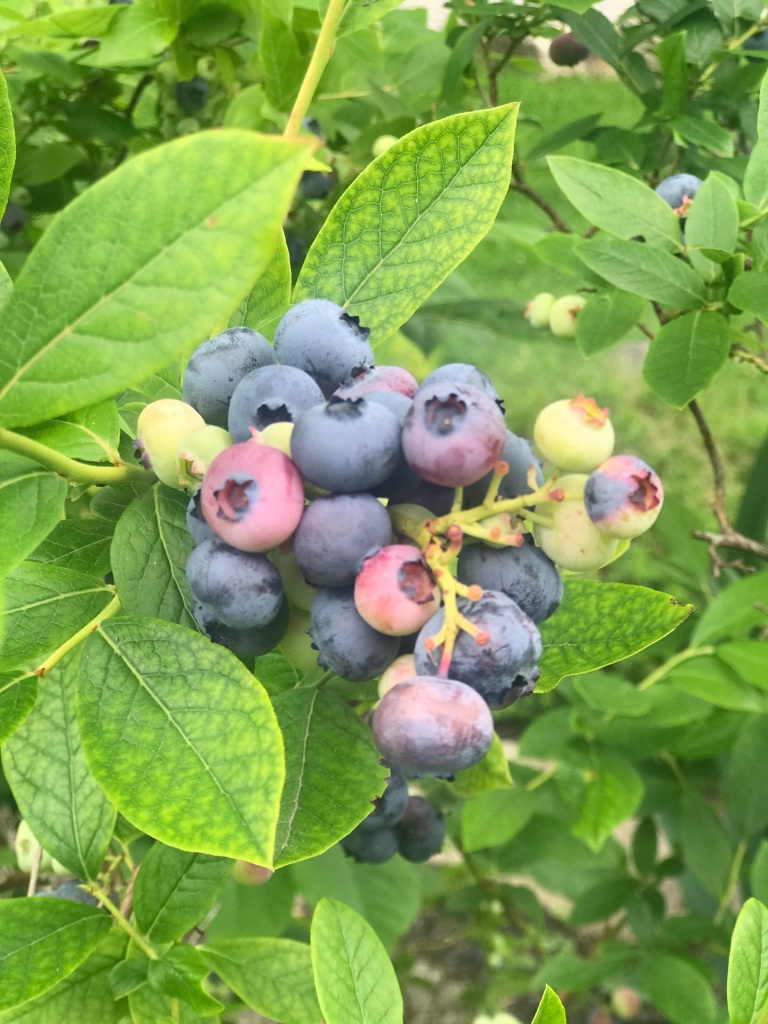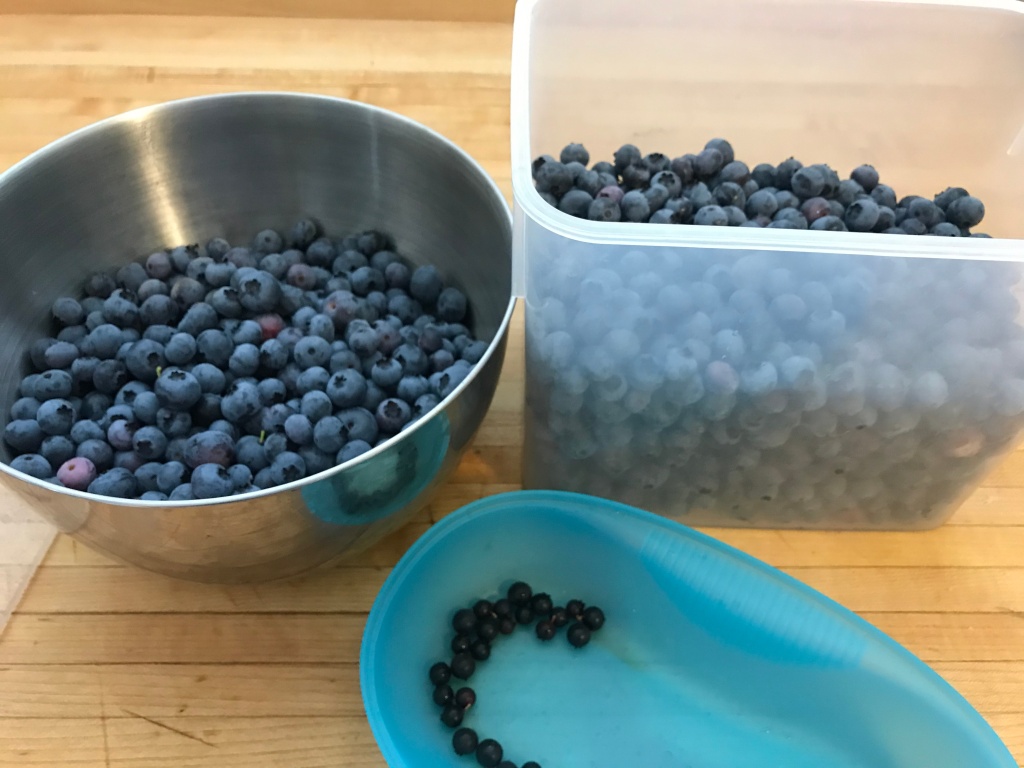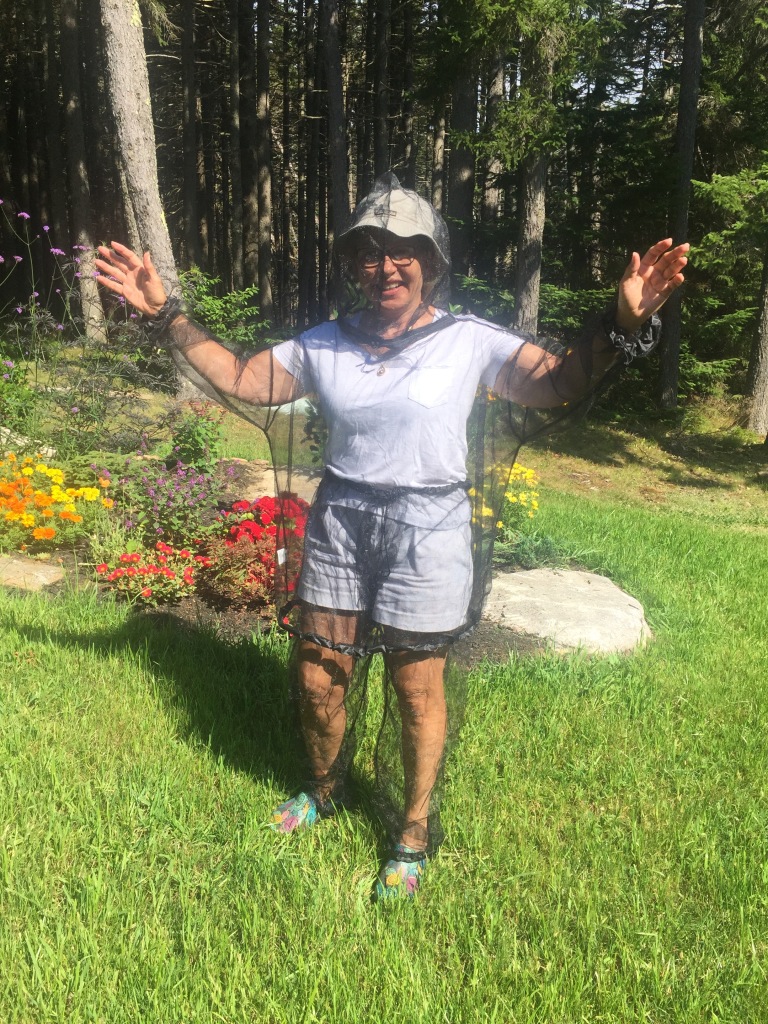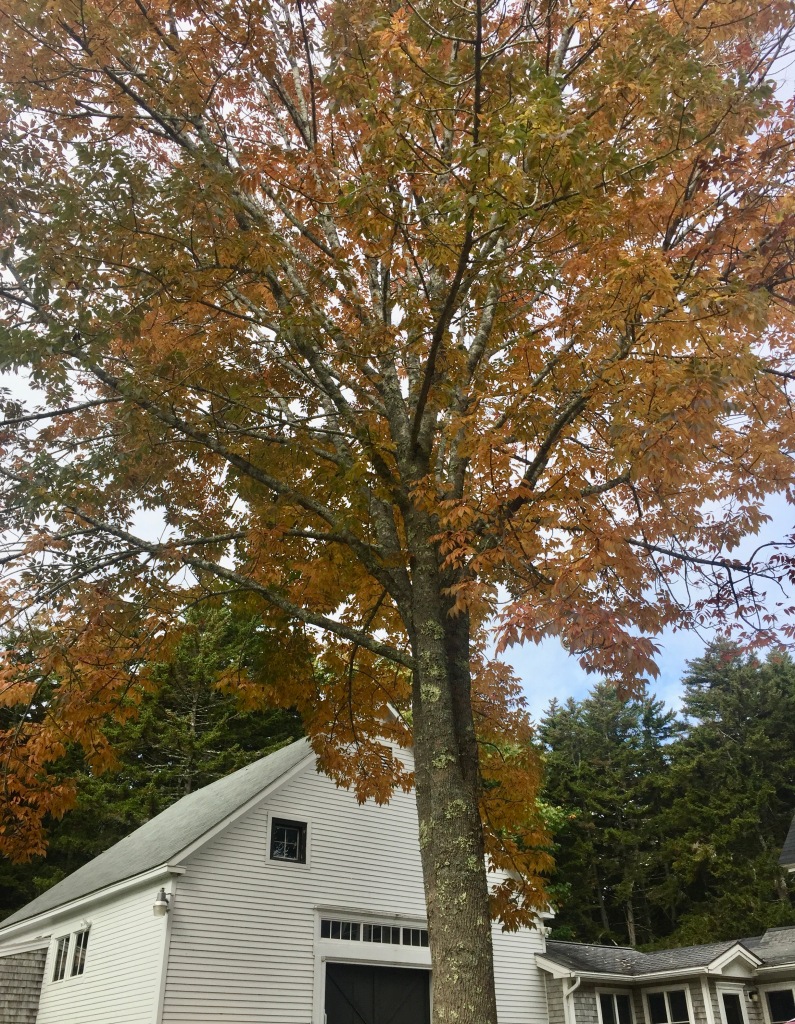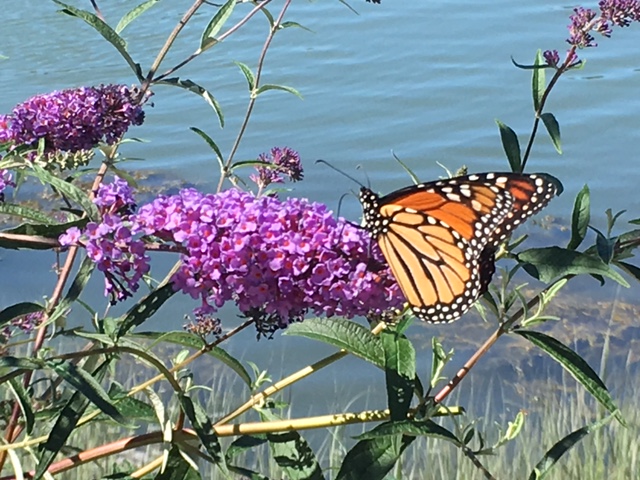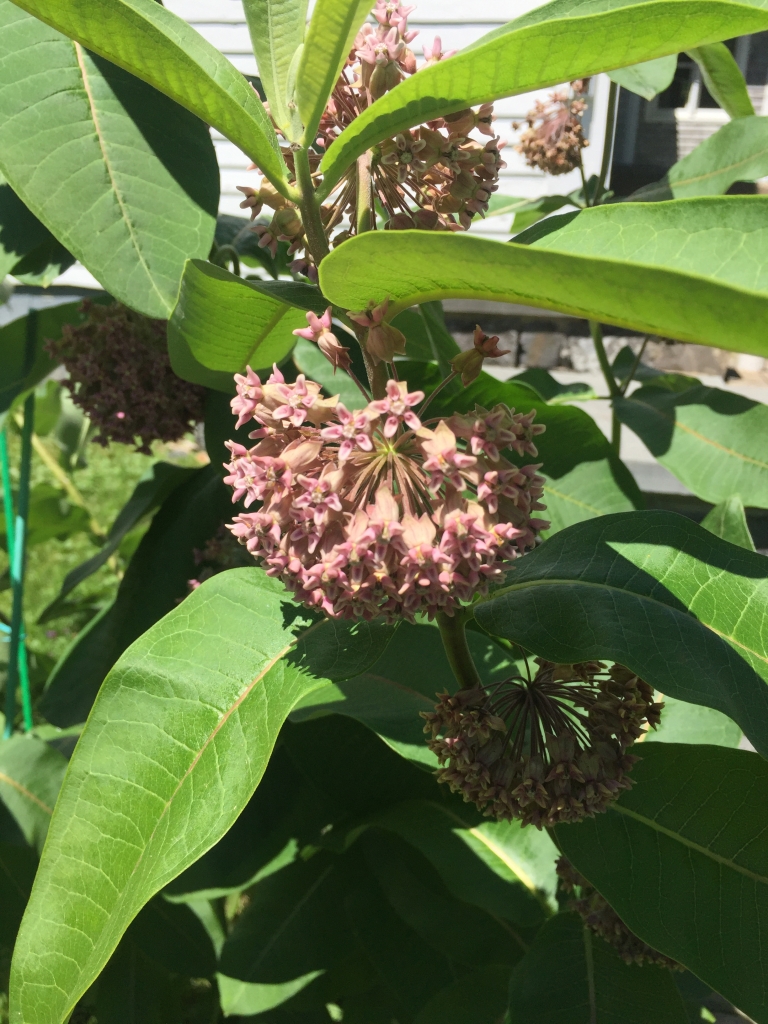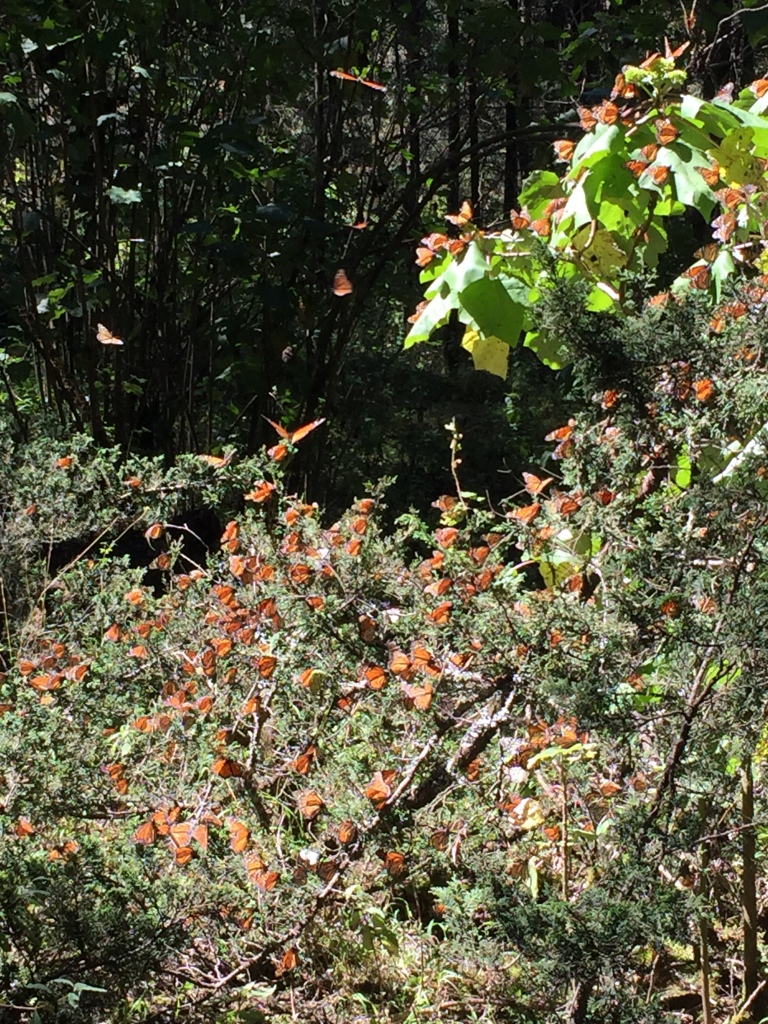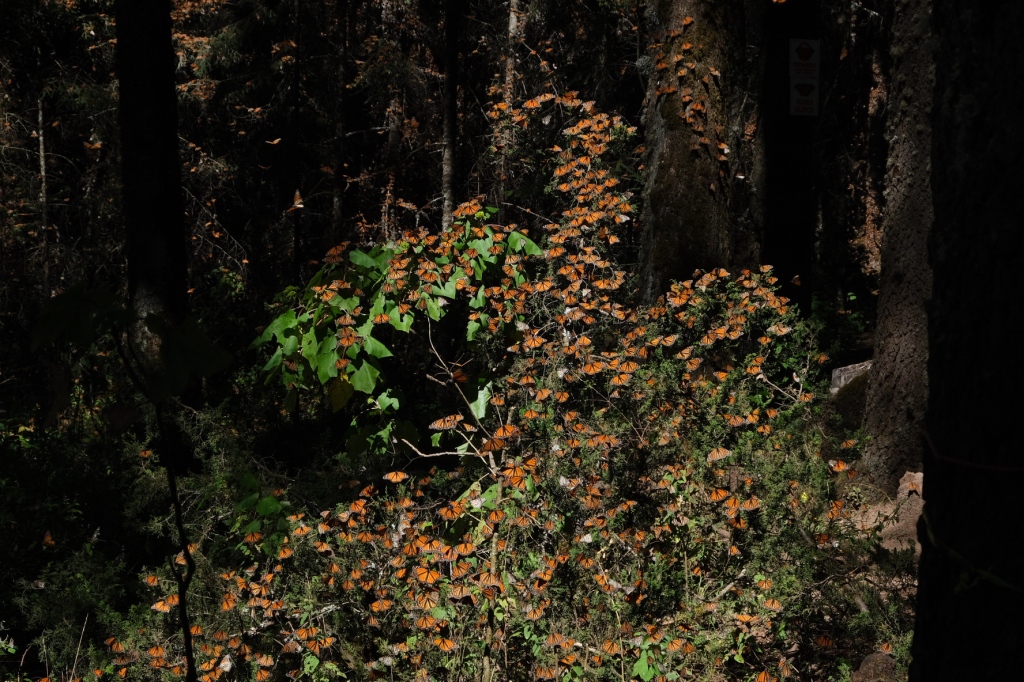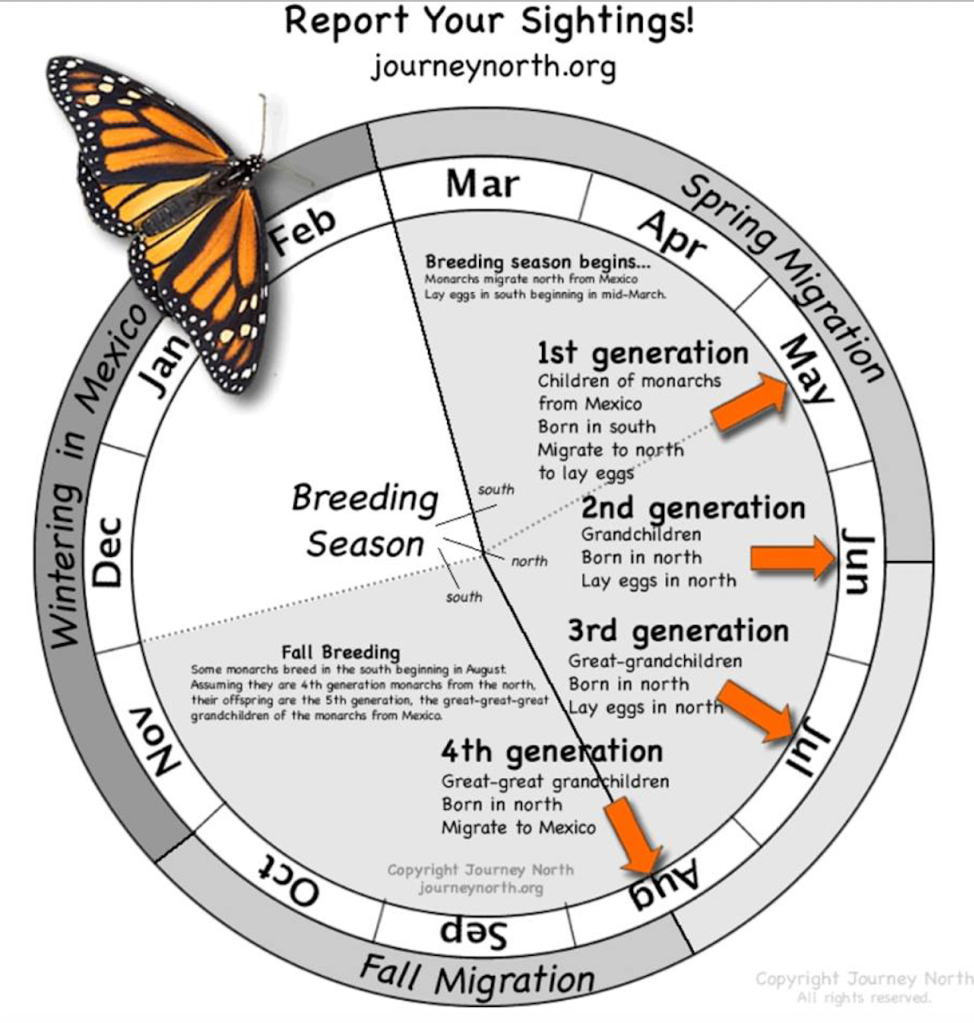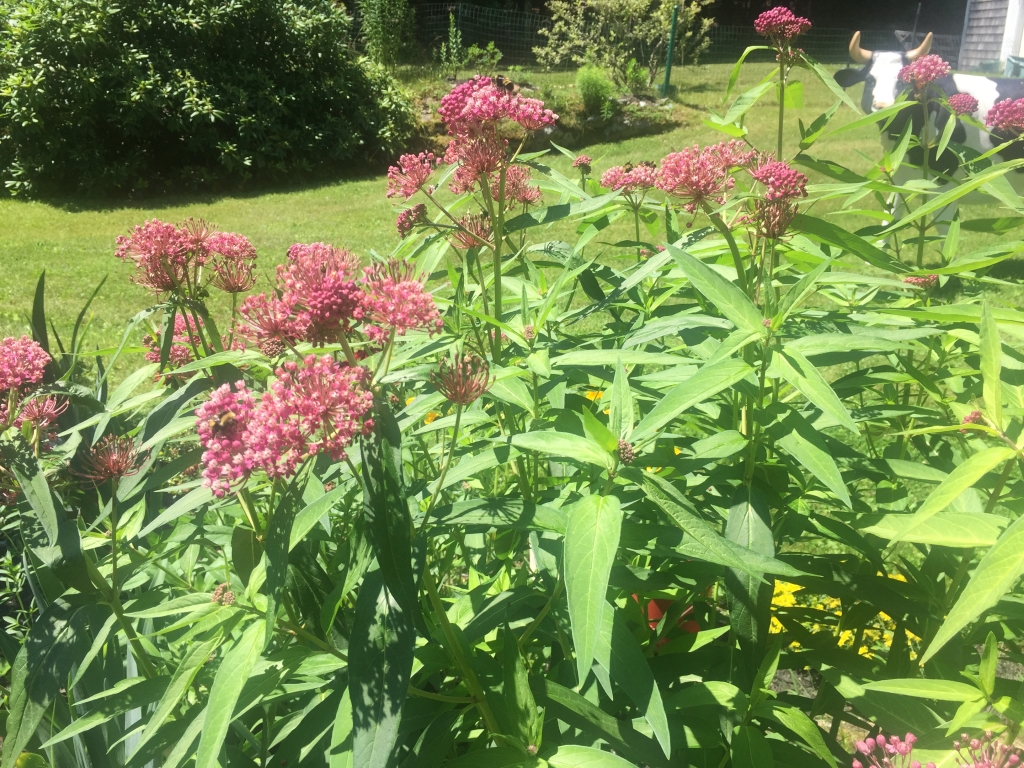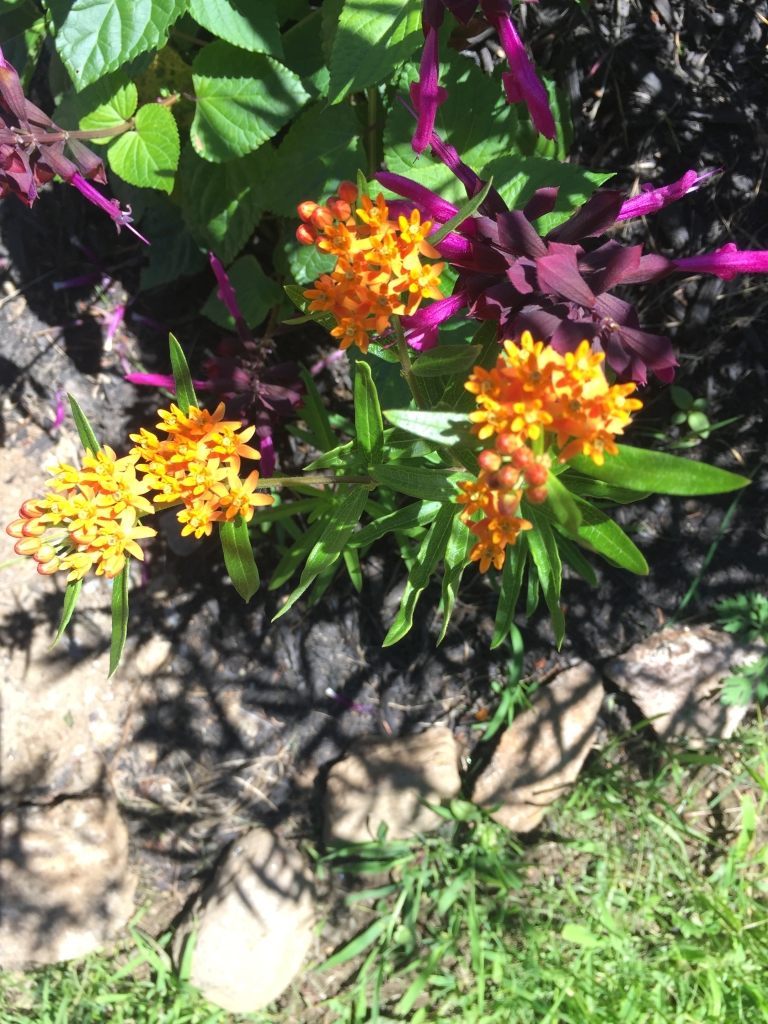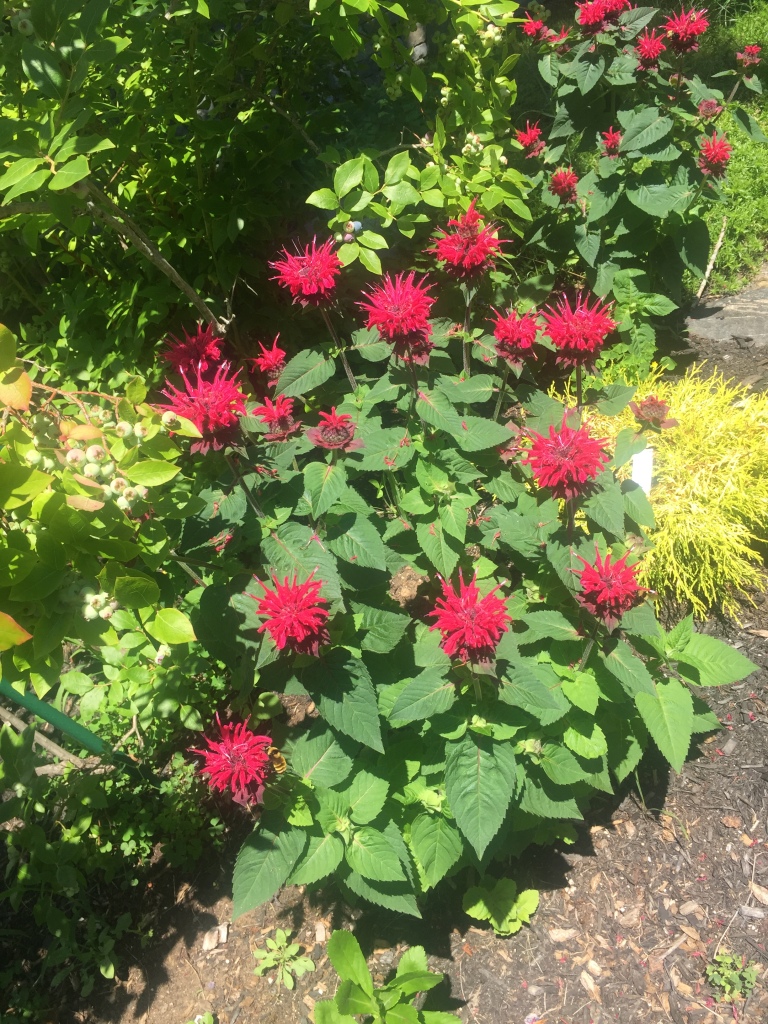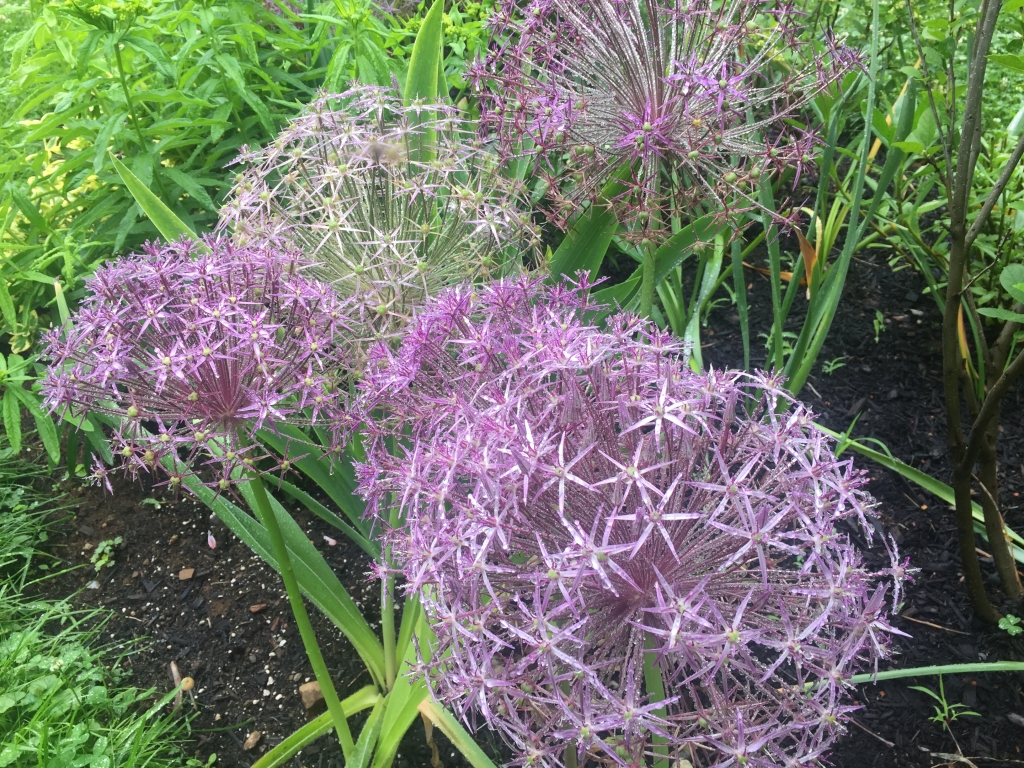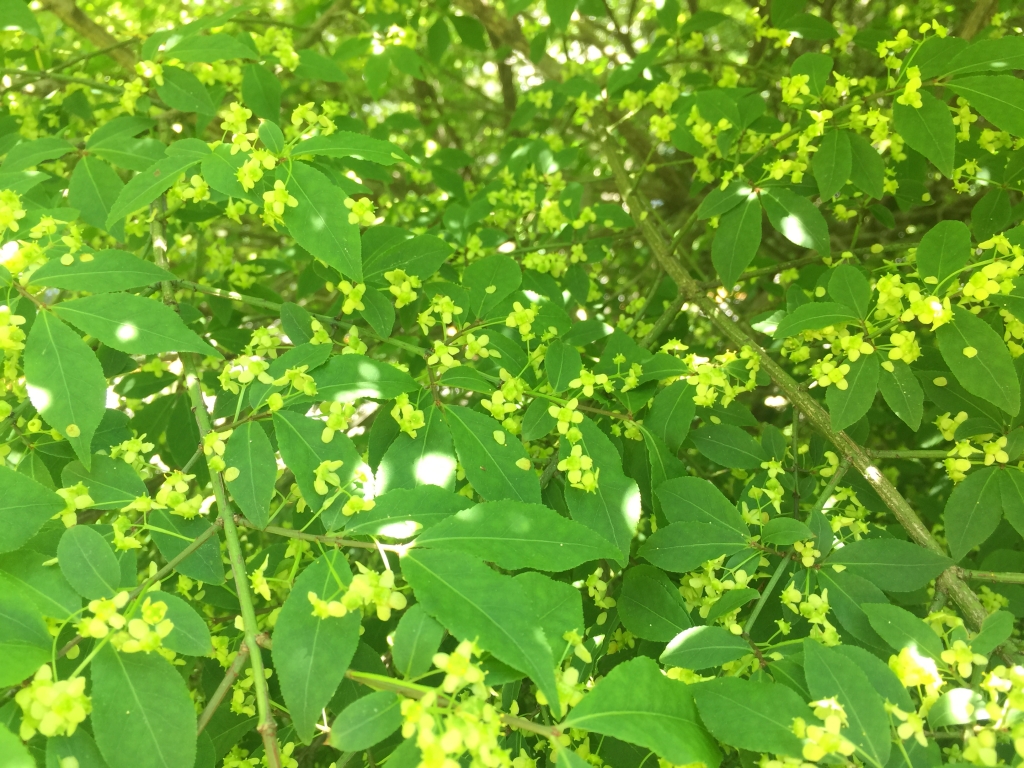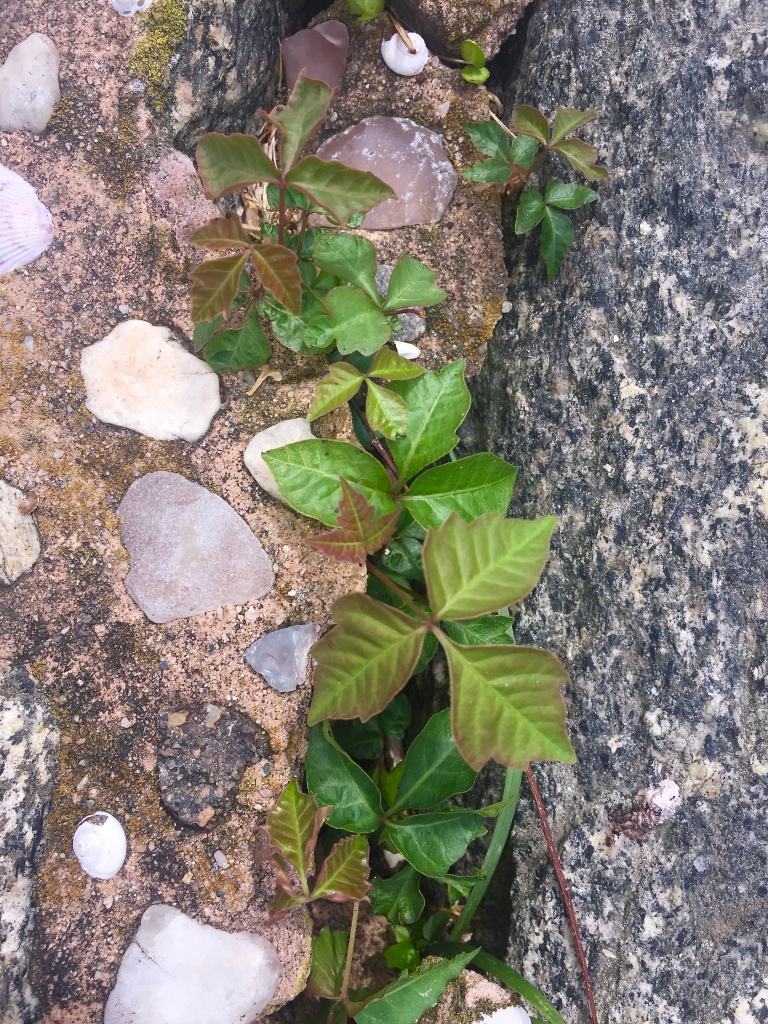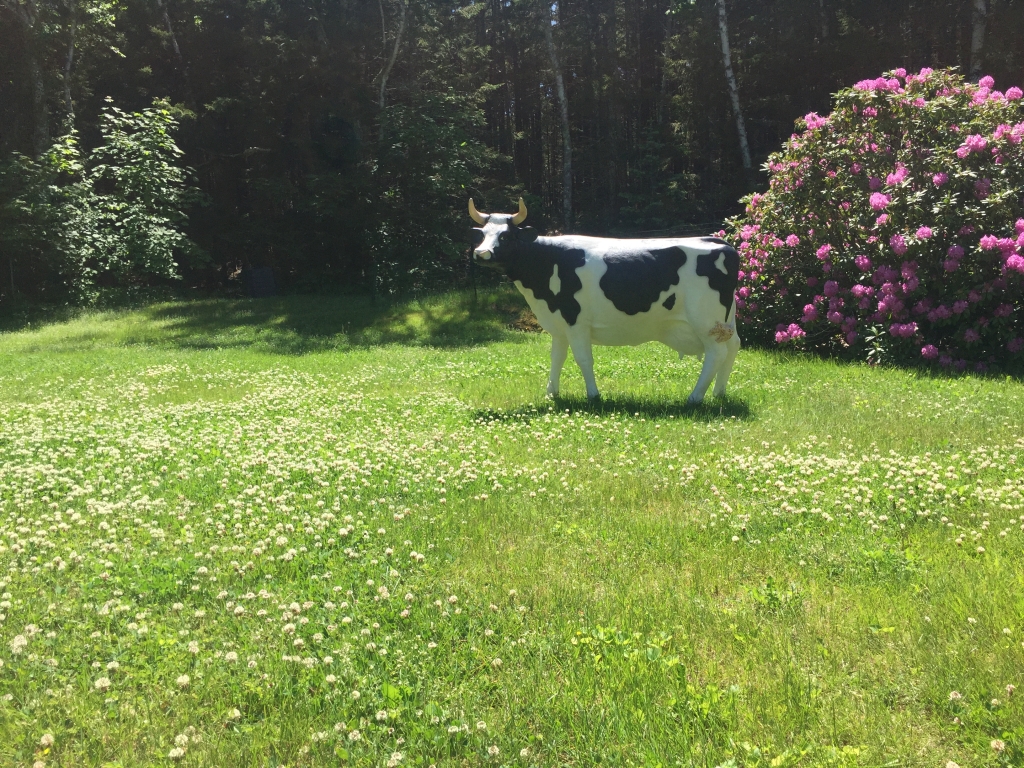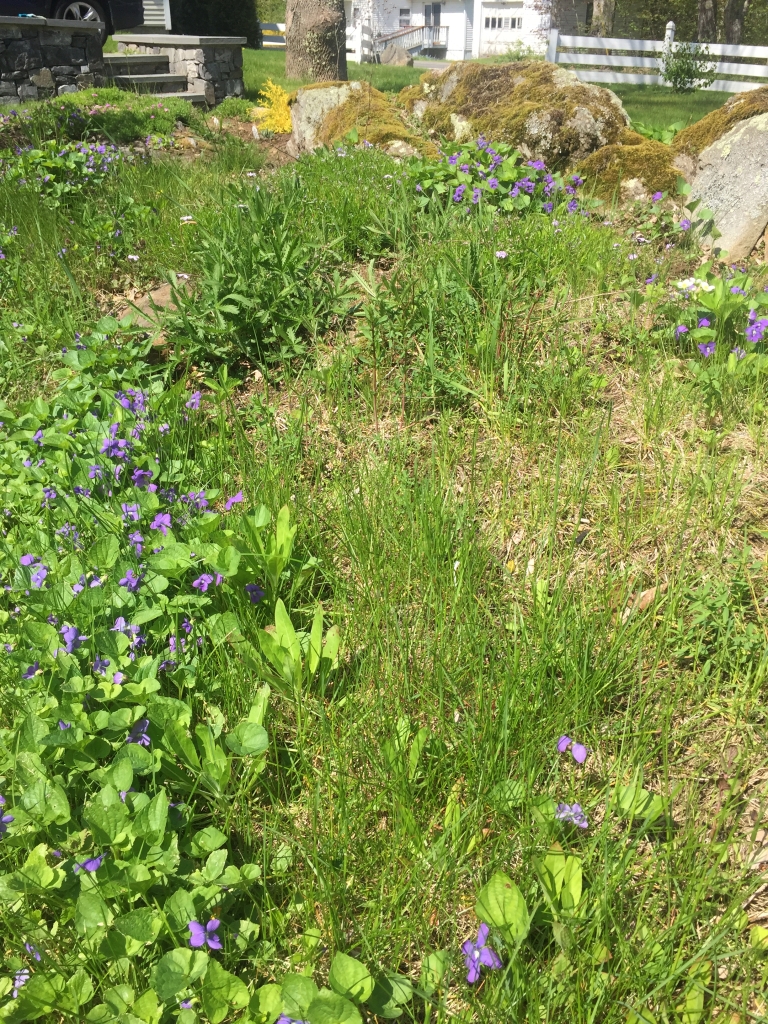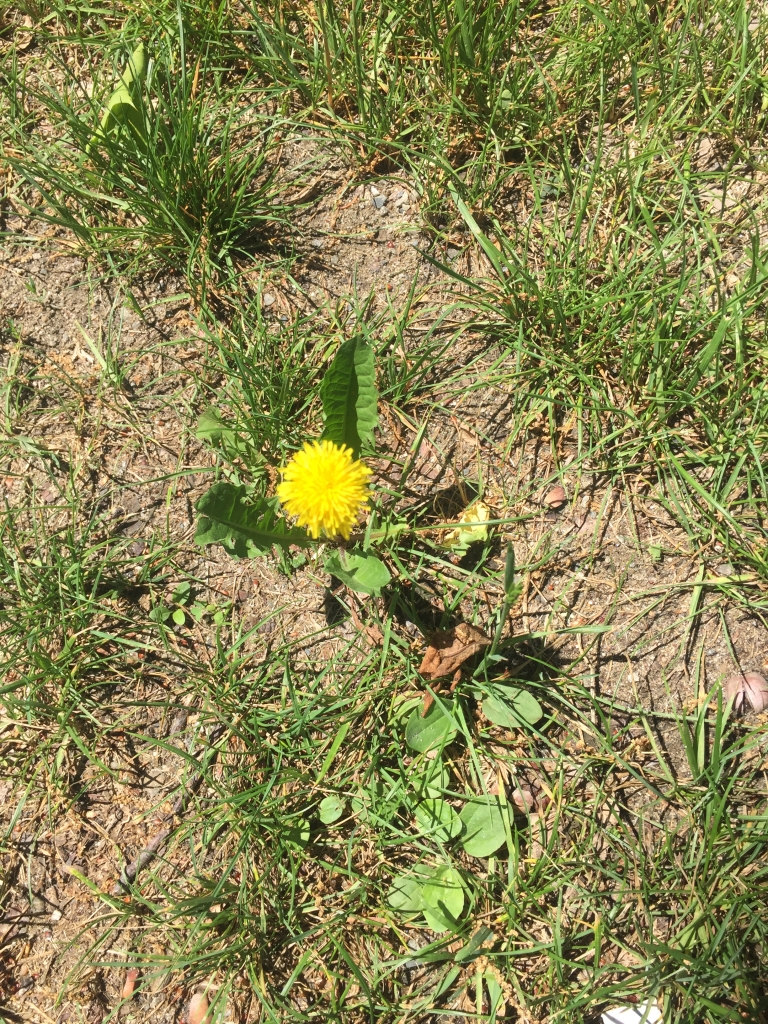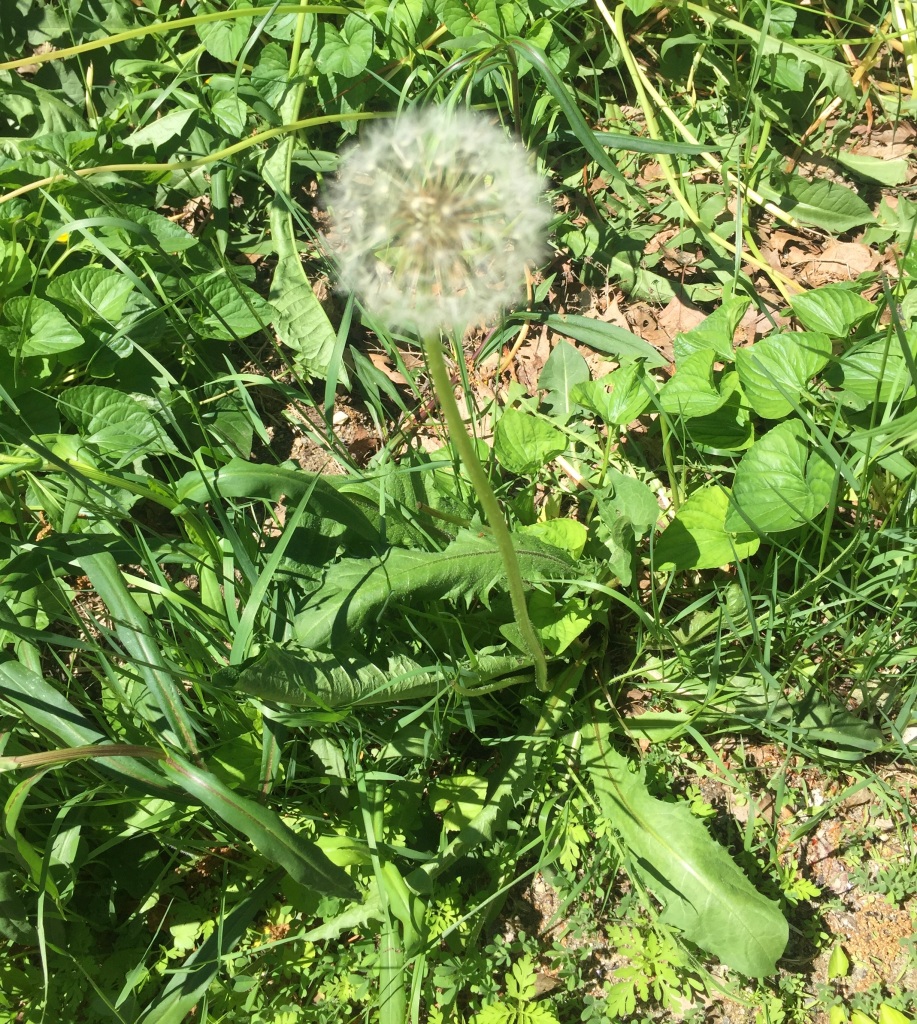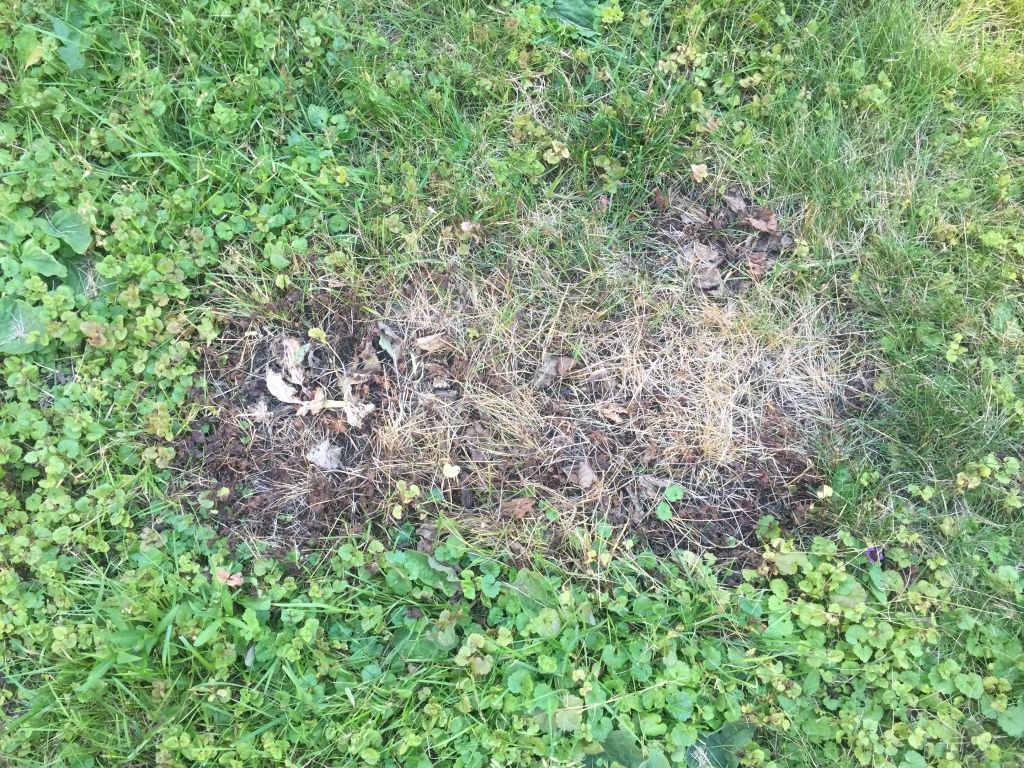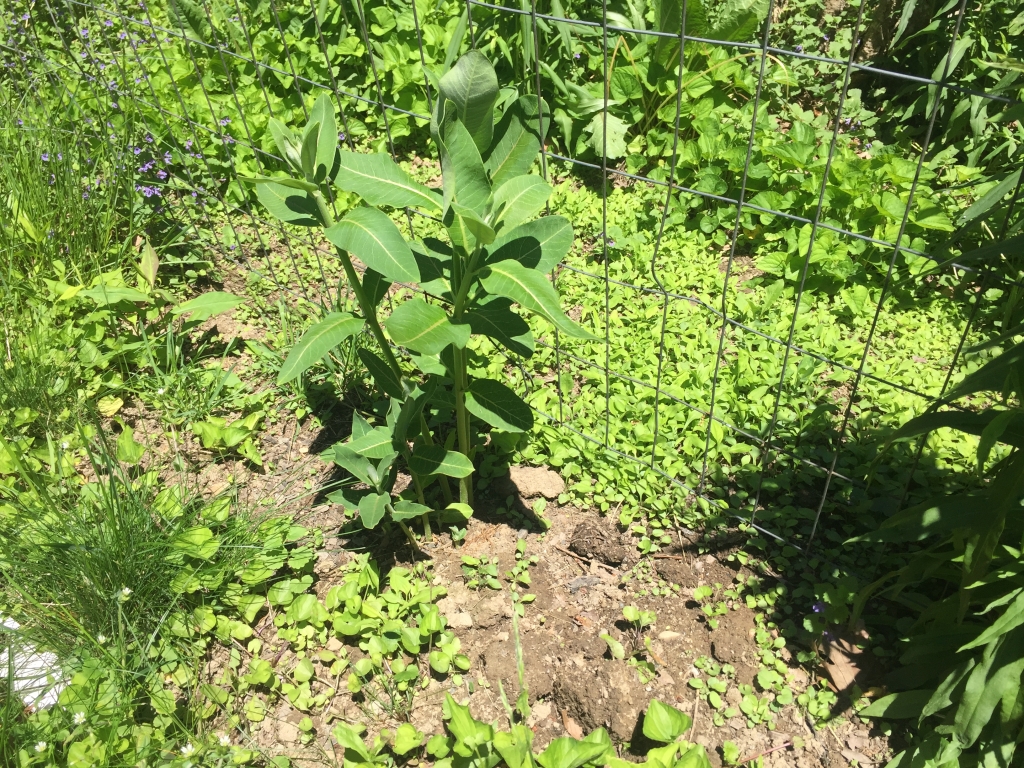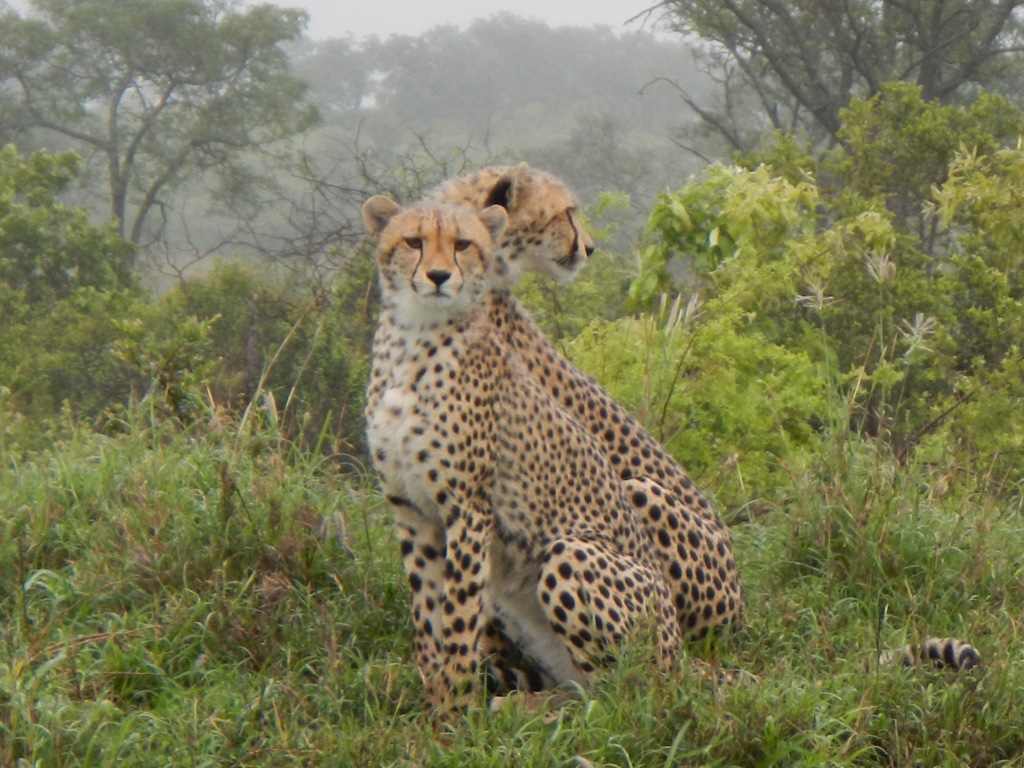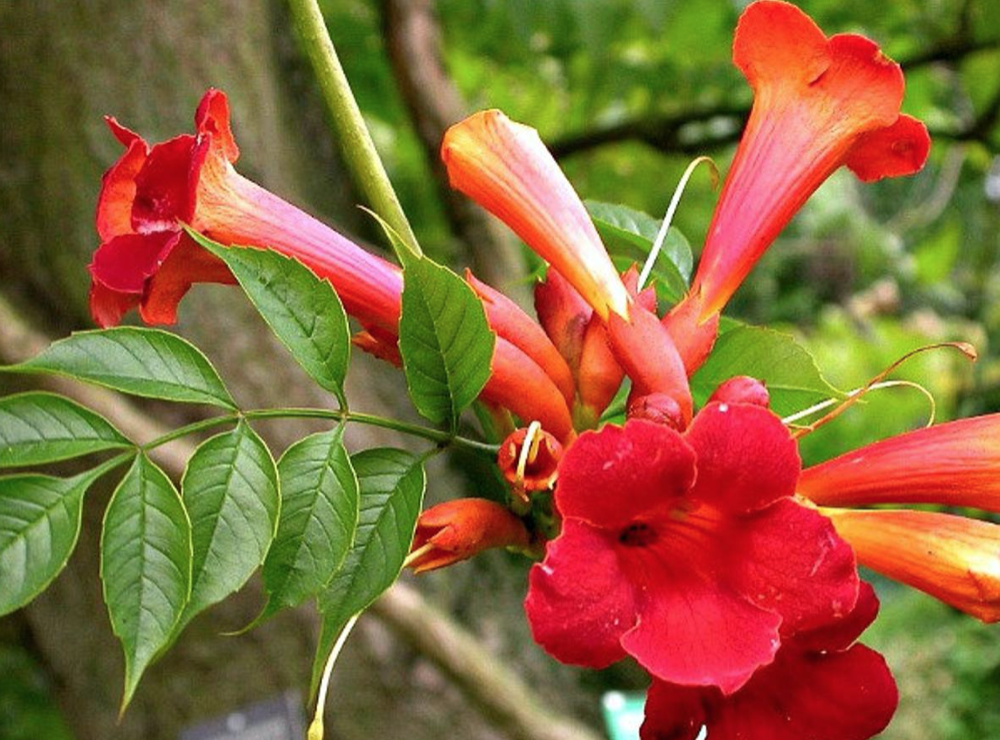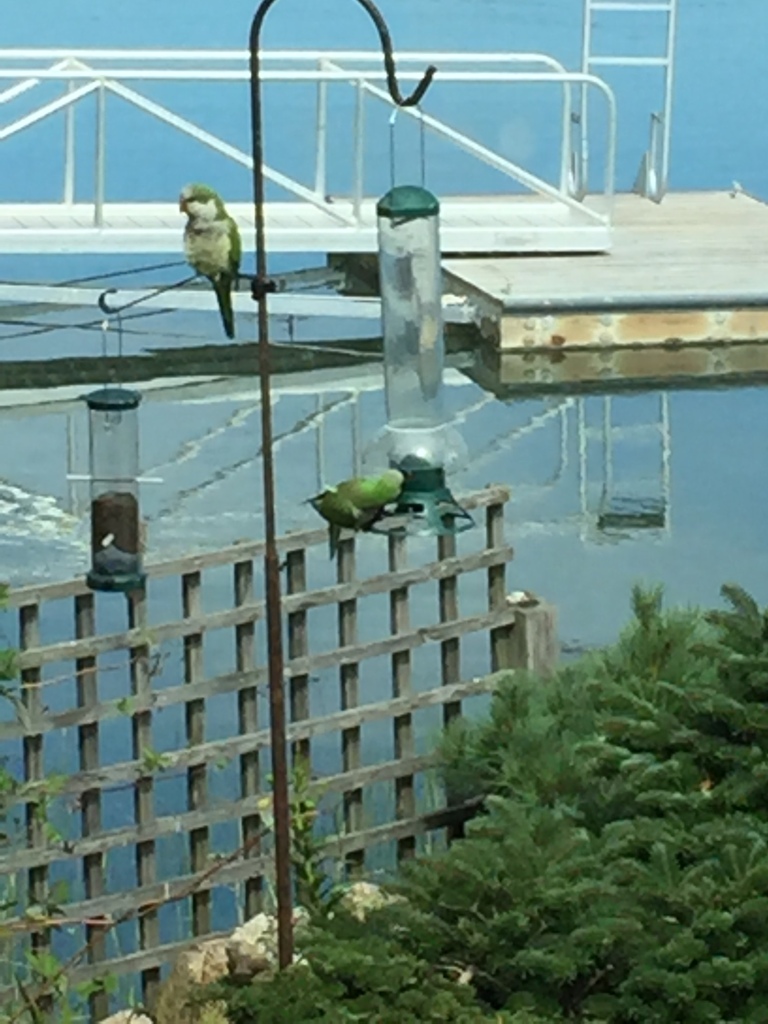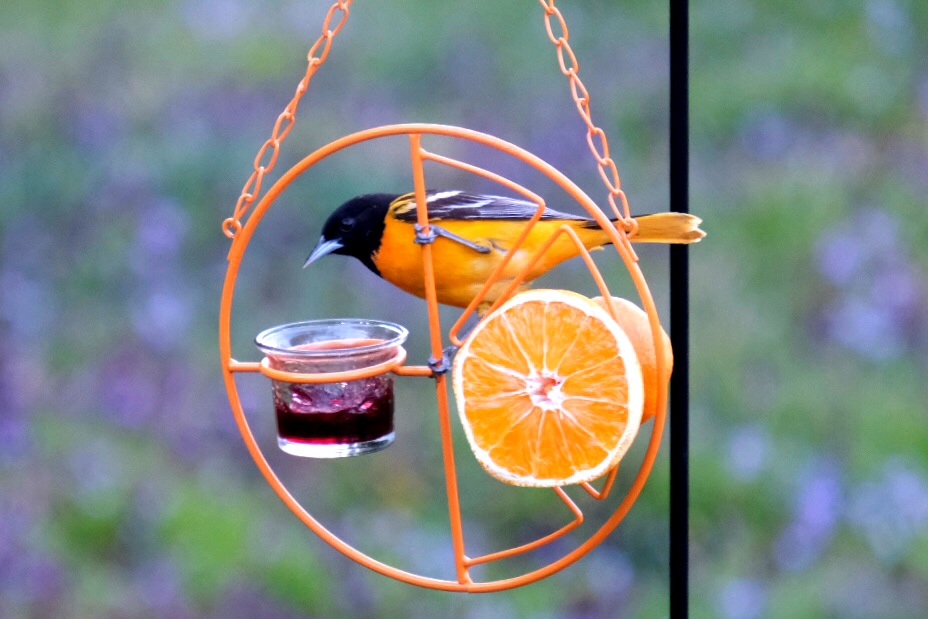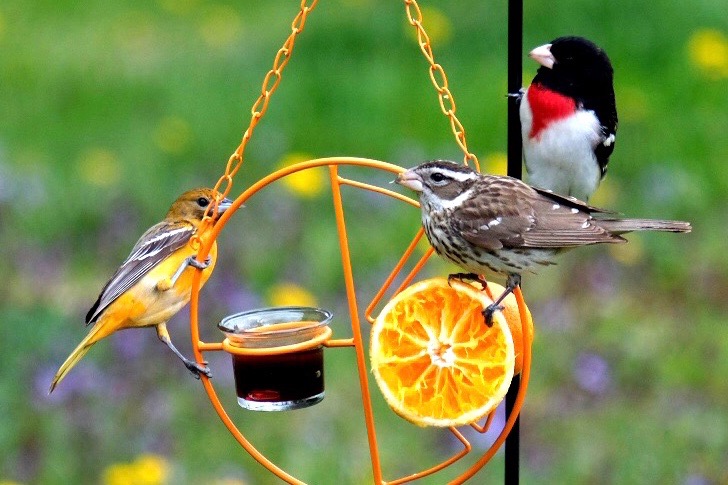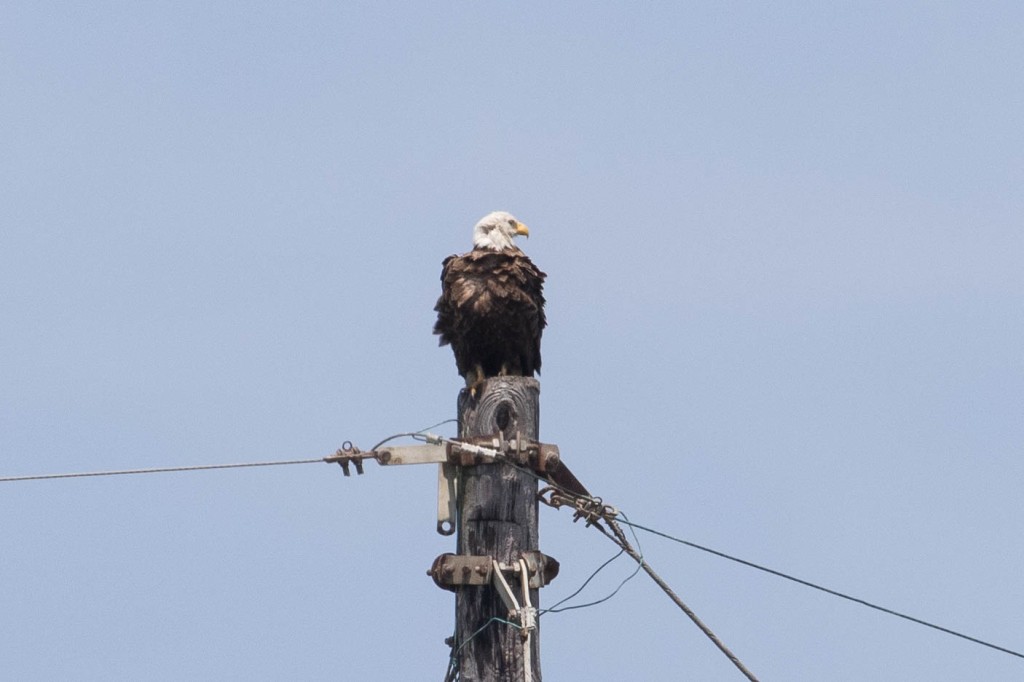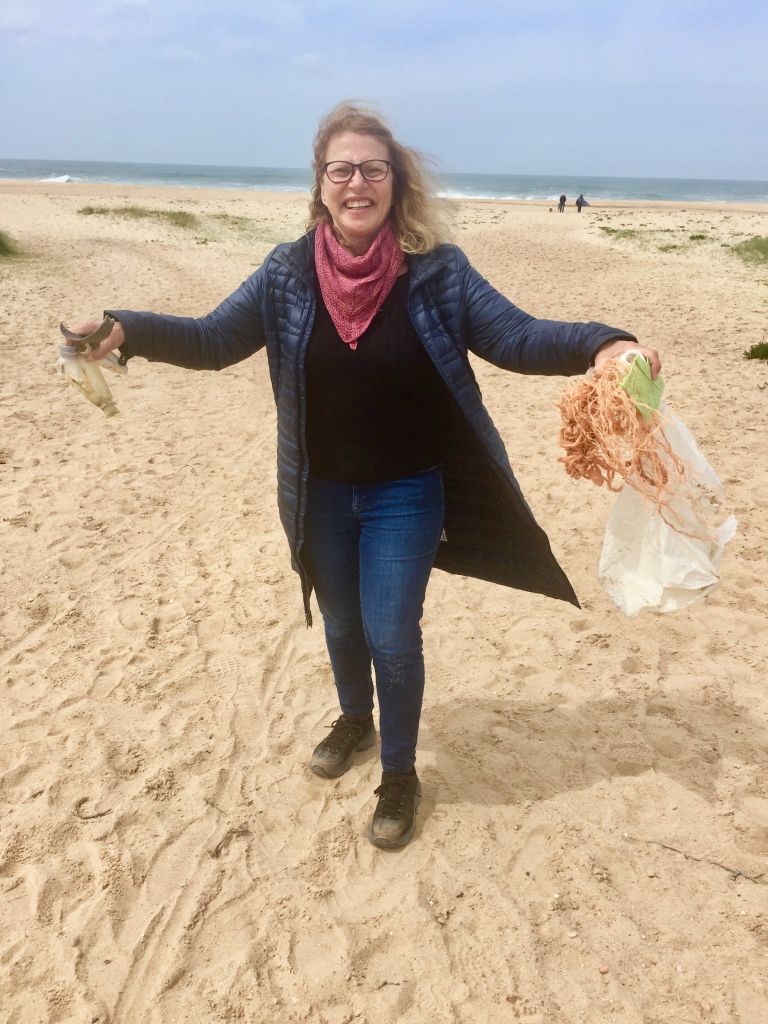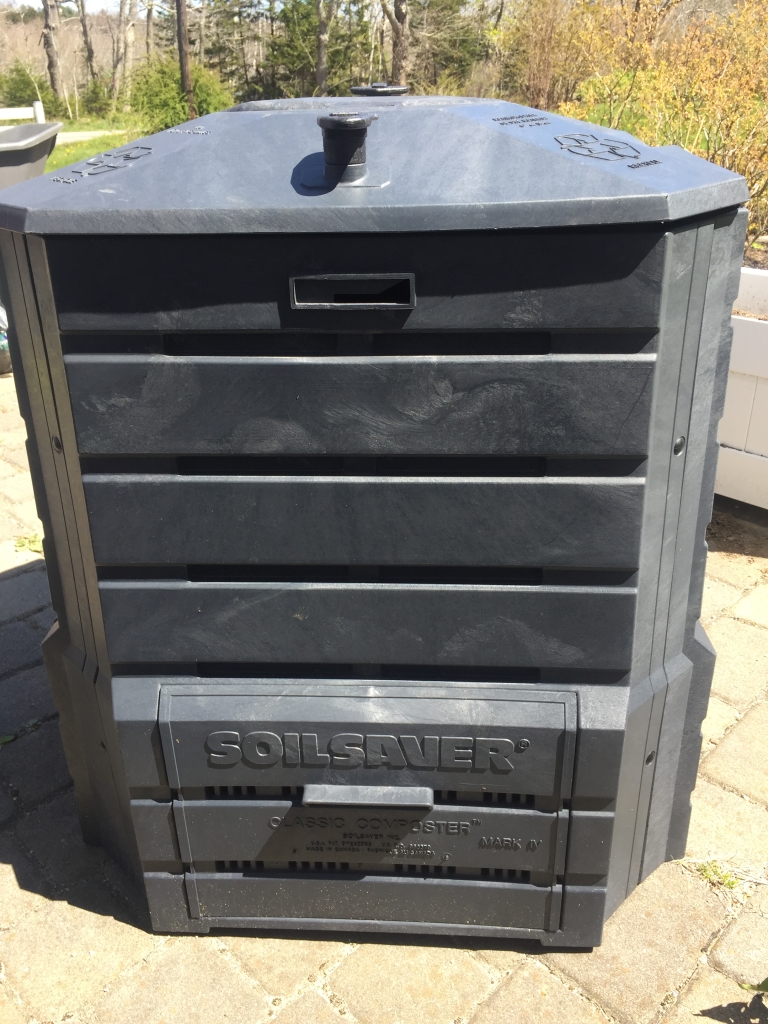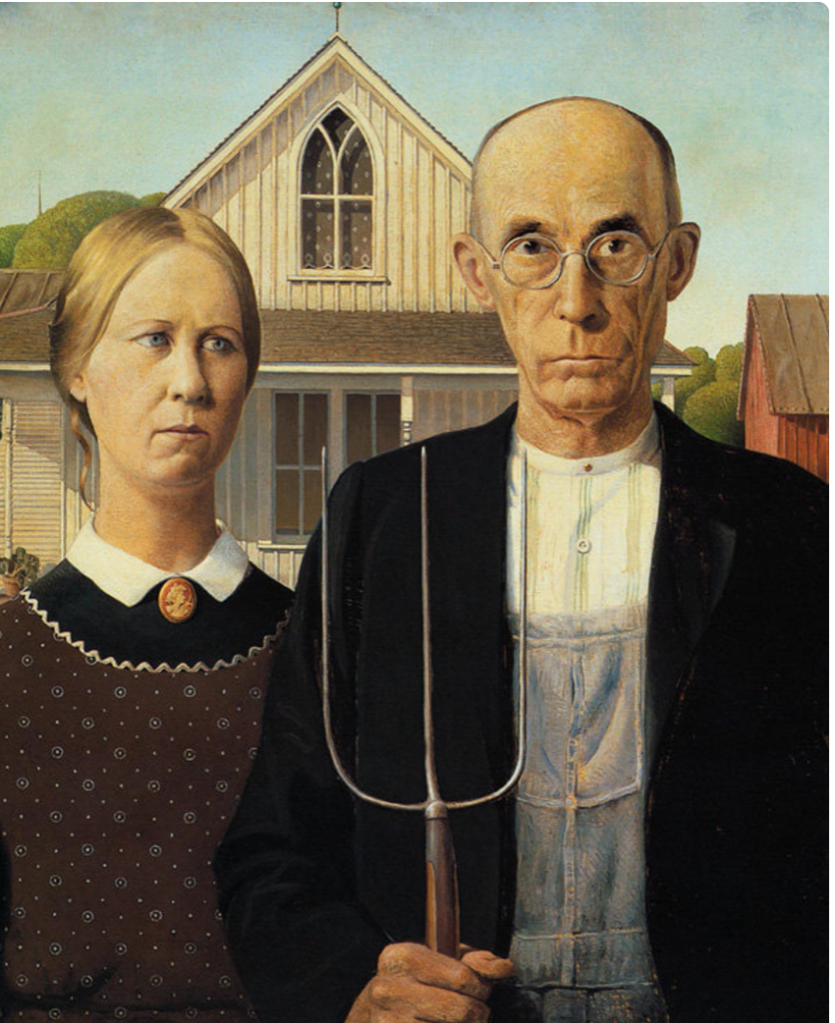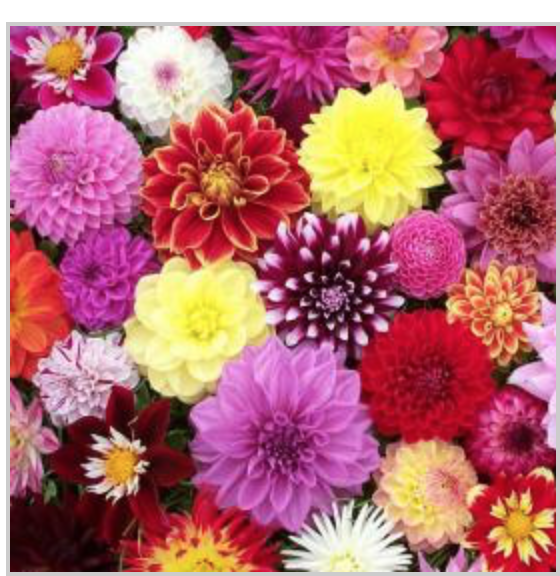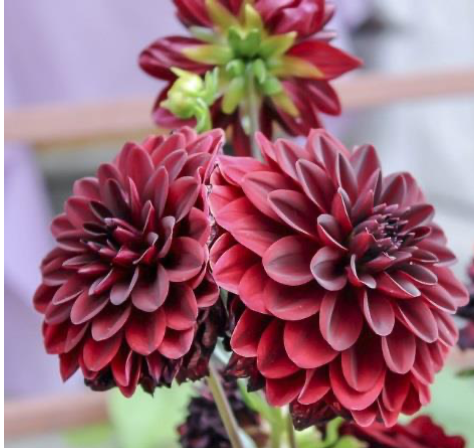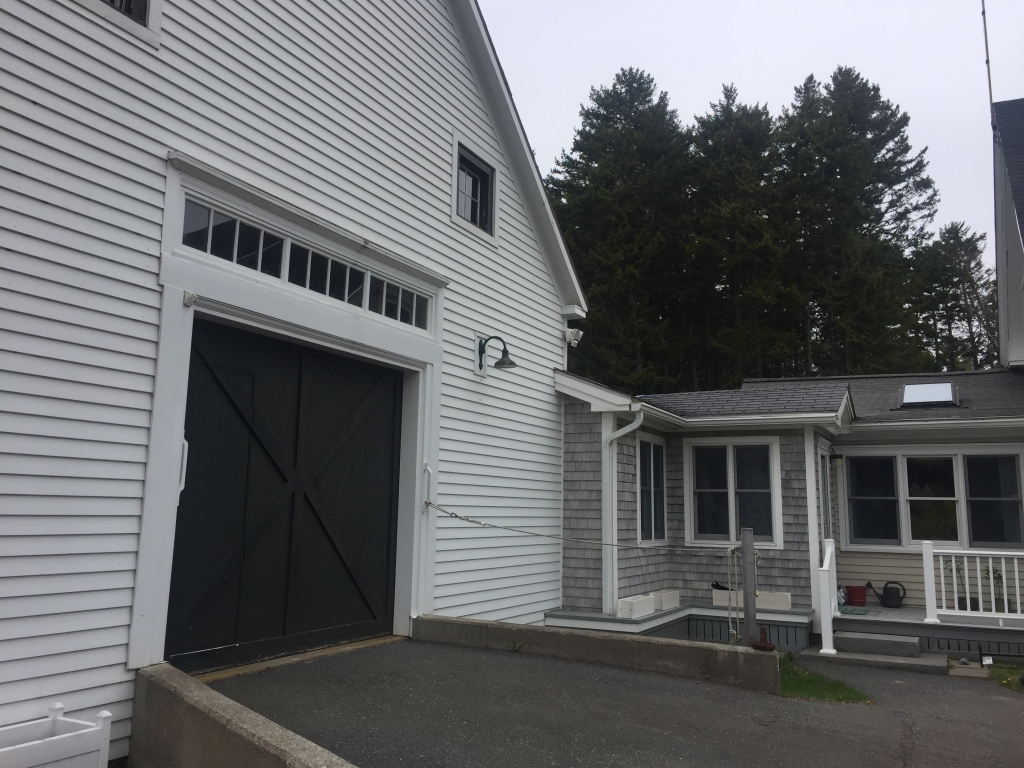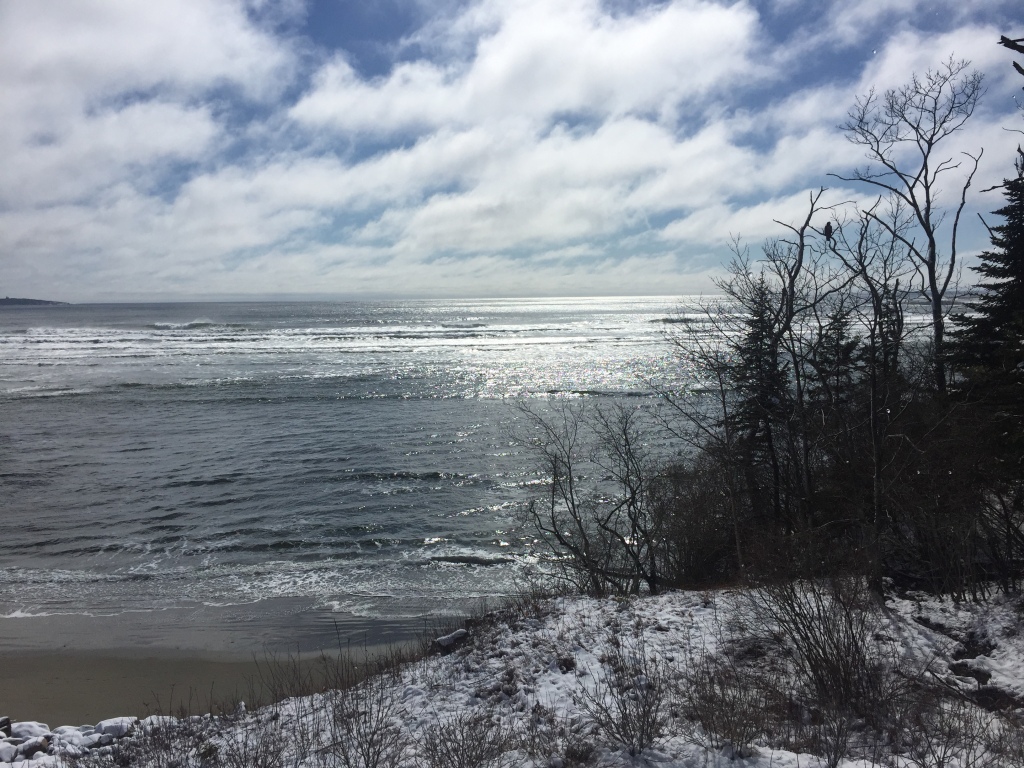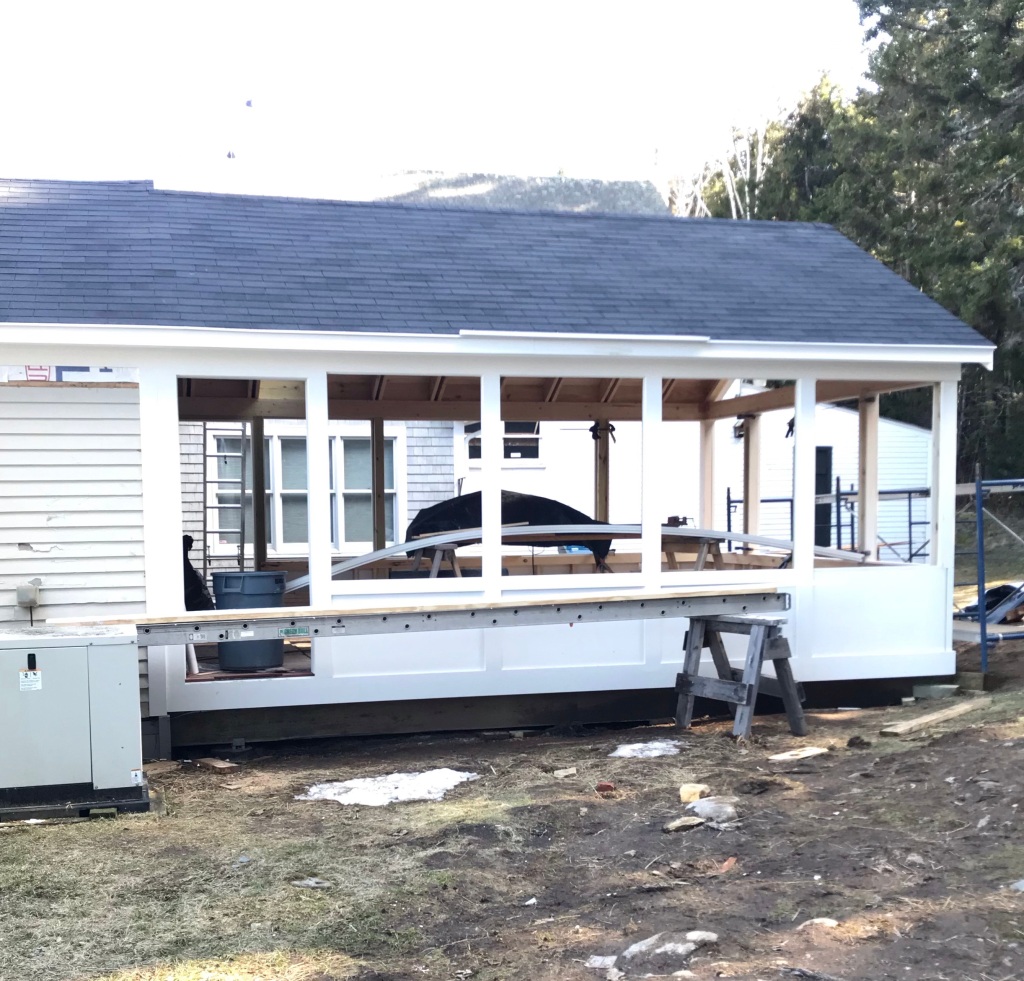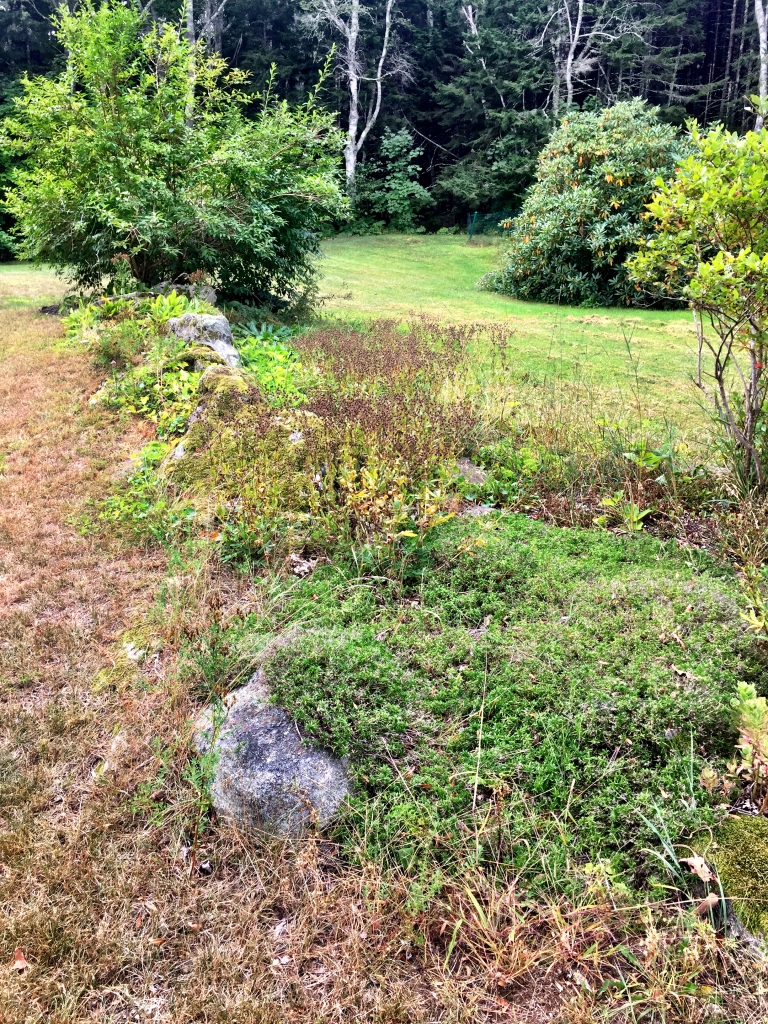Sandra-digs.blog
I apologize as it has has been too long between submissions. I have been hard at work gardening, not pausing to write. My garden woke from a long winter in April with a flourish of daffodils. The bright yellow flowers cannot help but make me smile.
I wandered lonely as a cloud
That floats on high o’er vales and hills,
When all at once I saw a crowd,
A host of golden daffodils.
William Wordsworth

I especially like the multicolored, peach, and complex flowers. The added benefit is DEER DO NOT EAT DAFFODILS AS THEY ARE POISONOUS. In fact, a drug used to treat Alzheimer’s Disease (galantamine), albeit poorly, has some of the chemicals derived from daffodils.
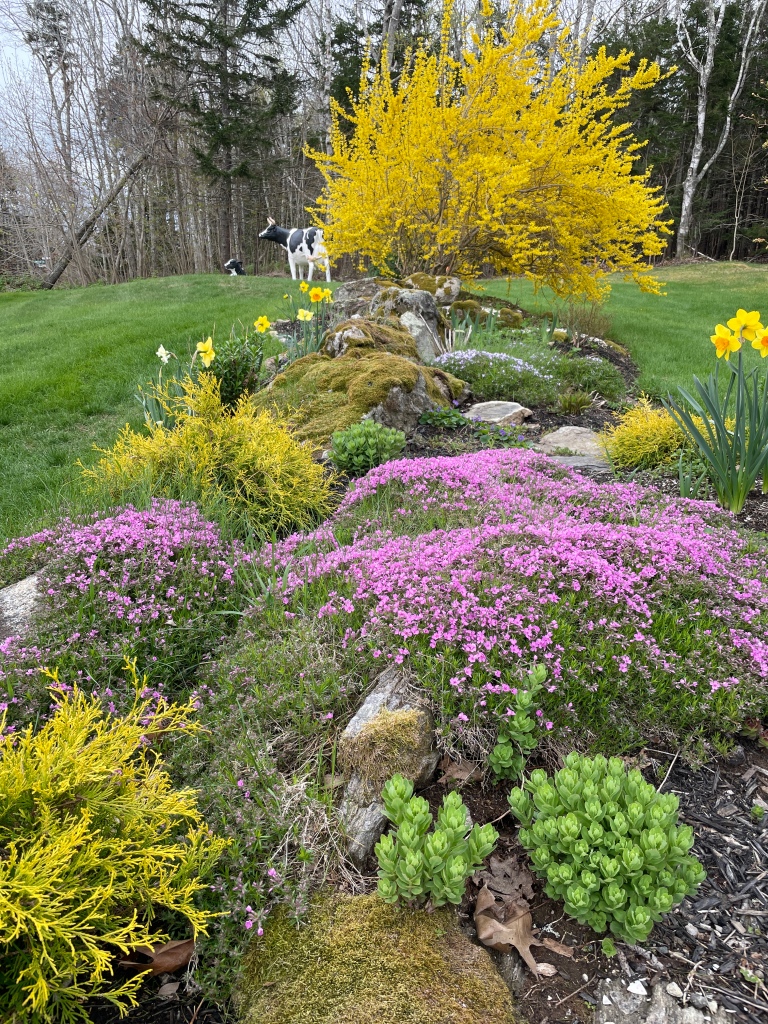

Spring in Maine can be fickle with wide swings of temperature. It is important to wait until the end of May, when the danger of frost has past to plant delicate annuals, and vegetables. I had eagerly removed protective coverings from the Mountain laurels when it snowed.
Snow in April melts quickly. By late April forsythia are blooming along with creeping phlox. Conifers turn a brighter green as they prepare for new growth. Buds on shrubs and trees swell in the warming rays of sun as the days lengthen.
April is a good time to plant dahlia tubers in pots and start seeds indoors. I bought a kit to germinate seeds of household herbs, on little peat discs. As you can see, the spindly seedlings were good for nothing more than a photo of mistake number 1. I know many people start plants indoors successfully from seeds, but I am not one of them. Maybe it is because I lack a greenhouse or cold frame or maybe should have used larger peat pots, but I was content to wait until the soil warmed up.
My indoor dahlias were more successful, starting them in April on a shelf in my office. Those tubers I had overwintered last year never bloomed prolifically. It could have been because I kept them in the dark too long or gave too much of a nitrogen rich fertilizer in the spring. It is not because of a lack of sun. I planted my new tubers in the same spot and they are already showing large flower heads.
I want some fall flowering plants for continuous color.
Since I live in Maine, I must arm myself to fight marauding deer, groundhogs, rabbits, voles. Last year my emerging coneflowers, sedum, elderberry flower buds, serviceberry flower buds, spurge, were eaten. Critters prefer the new growth at its most tender, most delectable stage.
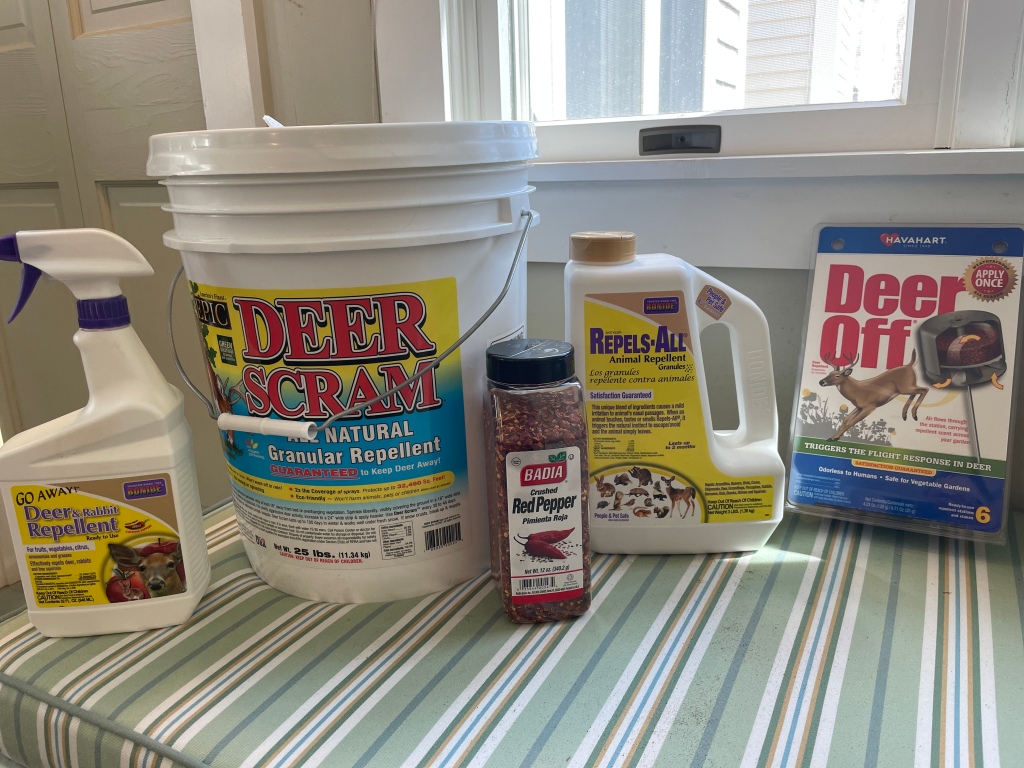
I have tried them all, including Irish Spring soap on cords surrounding the garden. Red pepper mixed with birdseed repels squirrels as birds do not have receptors for capsaicin.
Early May is too cold for planting in Maine, but it is the best time to observe all manner of birds. Spring migration is at its peak then. I have several feeders, as birds have very specific preferences.
I like a pre shelled mix of peanuts, sunflower seeds, and millet, to attract a wide variety of birds without creating a mess of shells. Thistle is preferred by goldfinches, and suet with embedded bugs or nuts work for woodpeckers. Most birds will stop on the suet feeder. I have not been successful in attracting blue birds, maybe because I supply freeze dried meal worms as I cannot abide the wriggly live ones. I think they need a larger meadow than I have. Baltimore orioles specialize in grape jelly and oranges, almost exclusively. Hummingbirds devour sterilized sugar water in a red plastic feeder designed just for them. They need to see the red color from the sky to find it. (Recipe is 1 part sugar to 4 parts water and boil to dissolve and remove impurities).
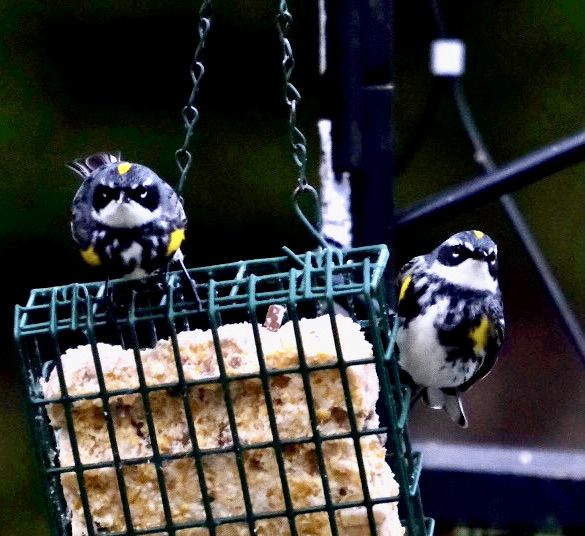
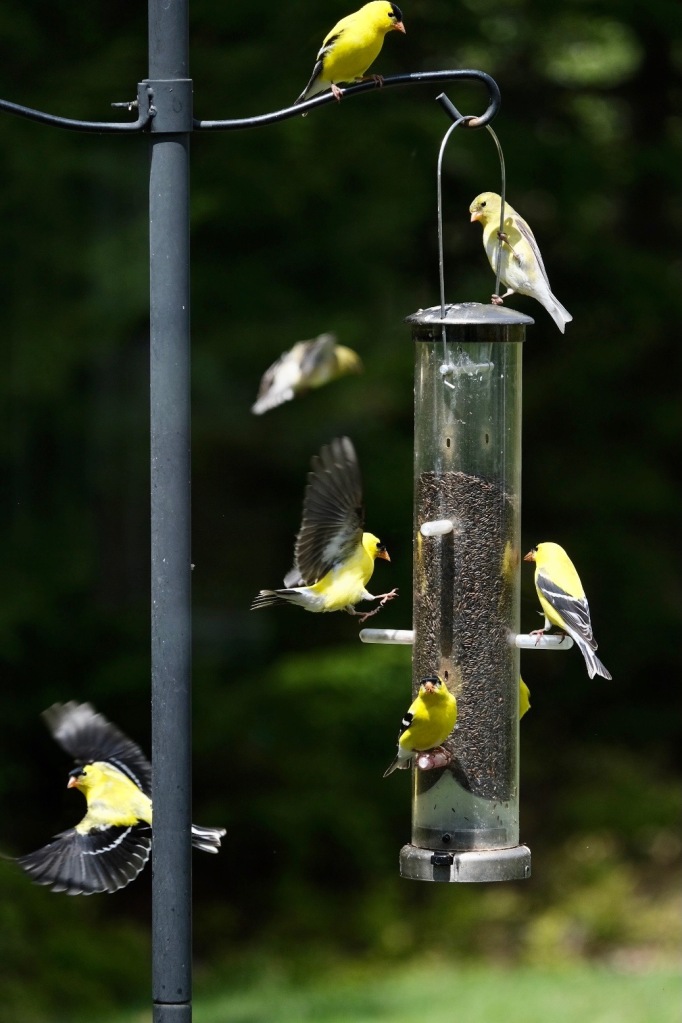
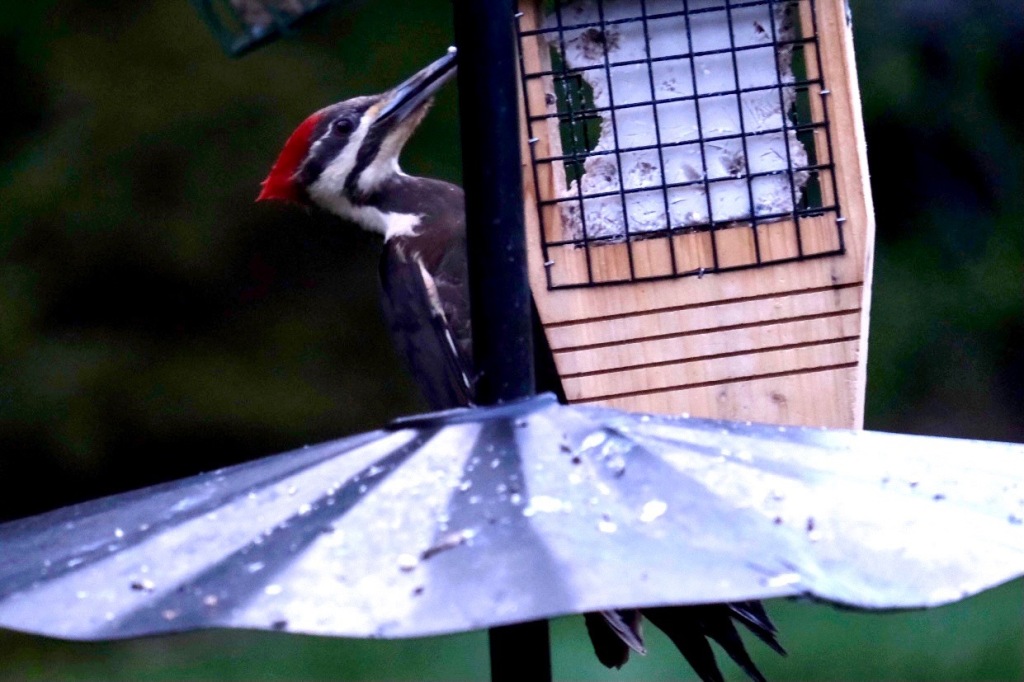
You do not have to be a “birder” to enjoy the birds, lists are not required. Their behaviors are fascinating, and complex, with internal hierarchies. If you do feed, please make sure the feeders are not in front of windows as collisions kill almost as many birds as do cats. The reflection of trees in a window looks like a clear path in the forest. Reflective decals stuck to the outside of windows help. Positioning the feeder away from the window is better. Note the squirrel baffle under my suet. These attach to feeder poles and are quite effective at deterring squirrels.
My favorite spring chore is discovering perennials that have returned from last year. They can easily be divided in early May to make new plants in other areas of the garden. I now have last year’s monarda Bee Balm (Bee happy) in several areas of the yard.
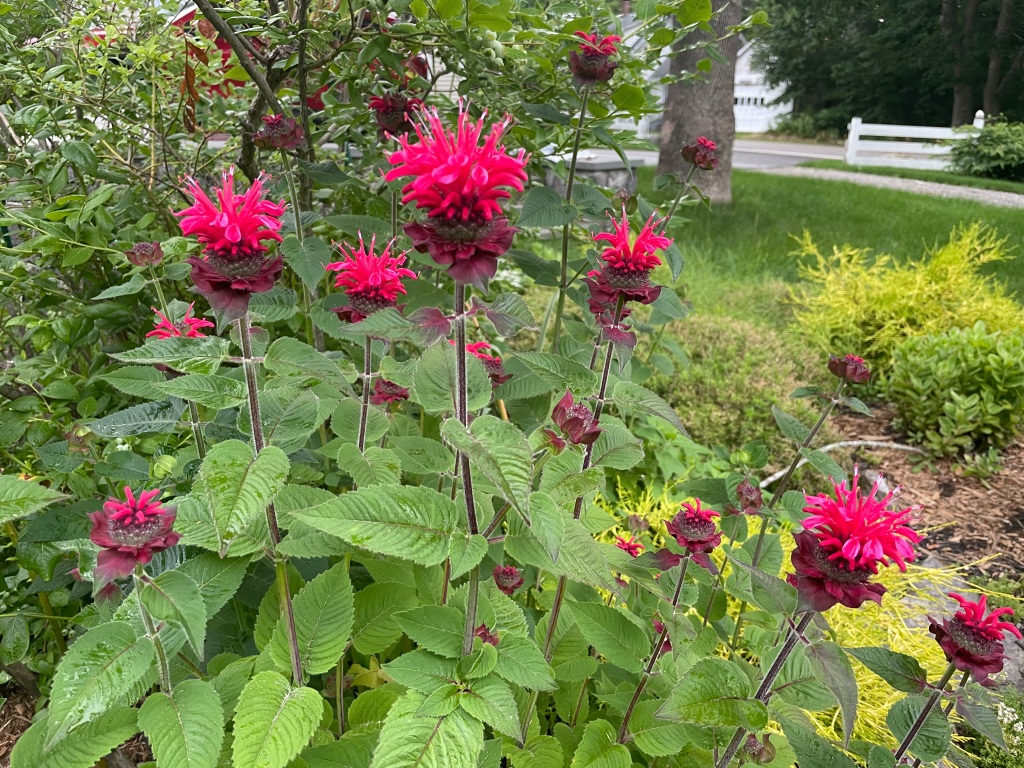
I will now return to my summer garden where the work is endless, but the feeling of fulfillment more than compensates. Long days are spent mulching and weeding, worrying about rain. There always seems to be too much or too little rain in Maine. The perennials are growing quickly filling up every available space. I spend long days watching the birds at the feeders. Hummingbird males adopt aggressive stances as they buzz each other. They often prefer to dart amongst the salvia and verbena rather than partake of my prepared food.
Sometimes I think I see the stems lengthen in the summer sun. Not all plantings are successful and that will be discussed in the summer installment of My Maine Garden.
